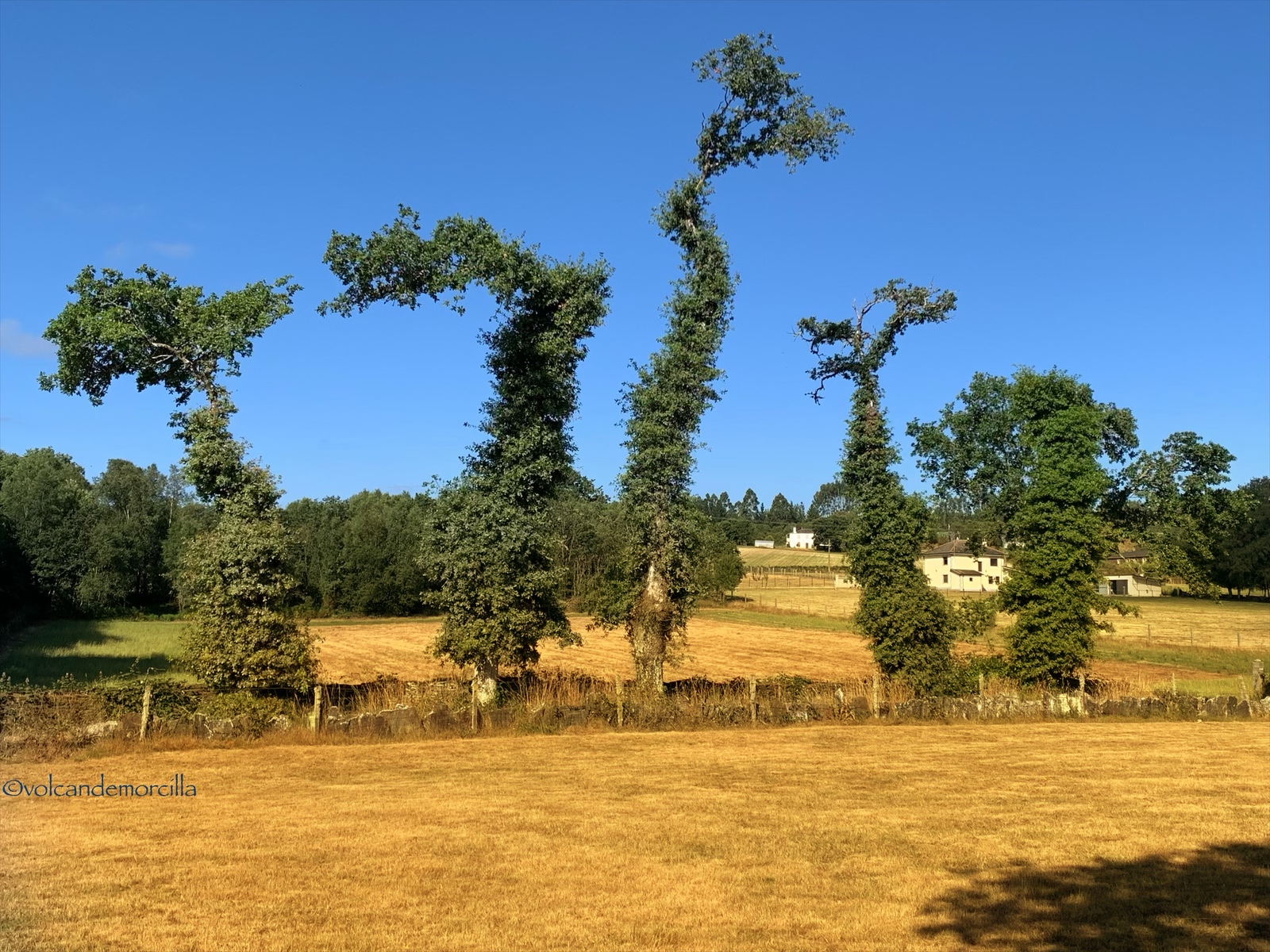
Salimos temprano de Vilalba y llegamos a San Xoan de Alba con su pequeña iglesia y cementerio neogótico, como el de ayer en Goiriz. Hacemos nuestro rezo al Santo Apóstol y proseguimos la marcha.
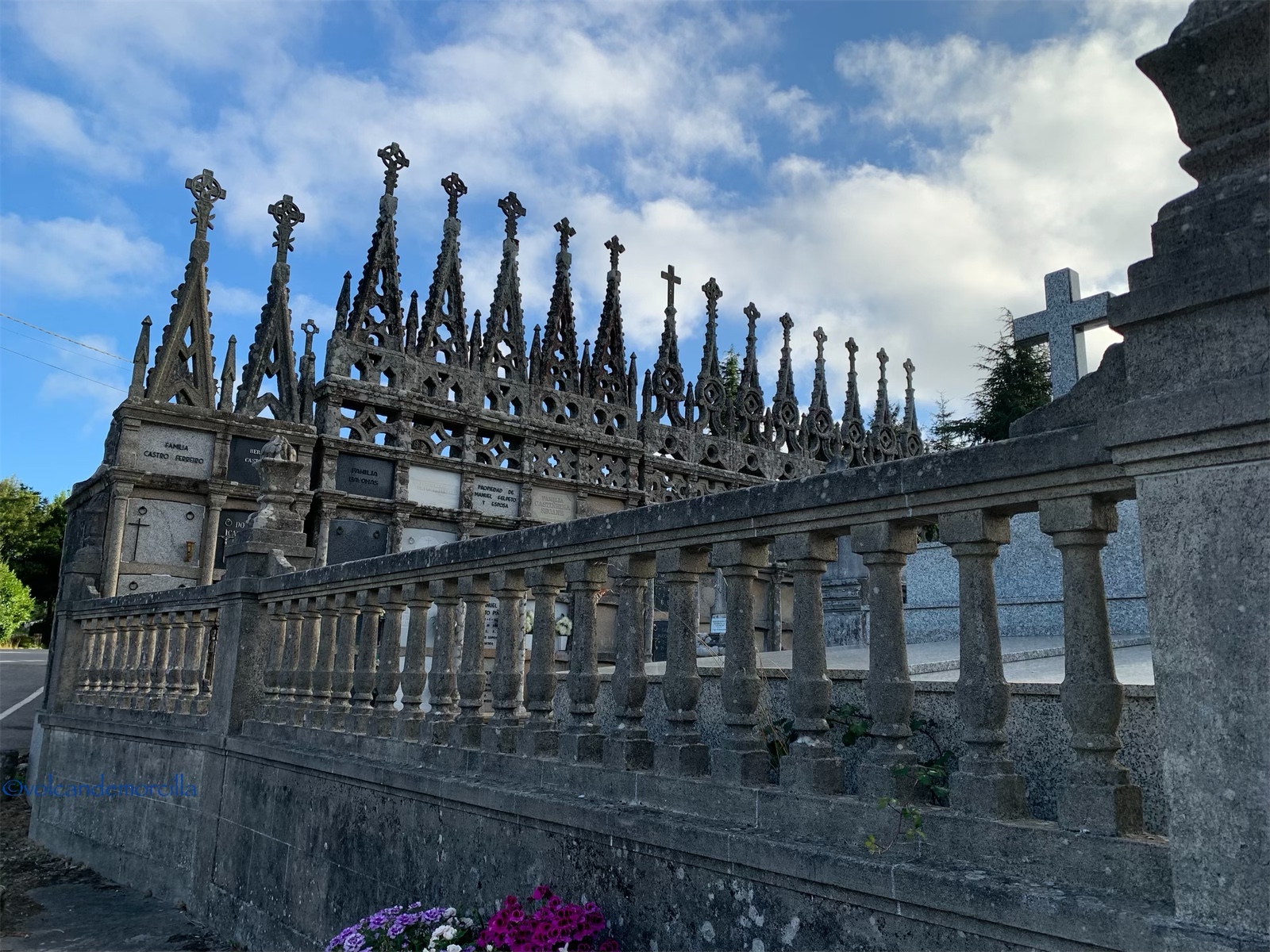
Enseguida, estamos en un entorno rural. Caminamos por una vereda más estrecha, pero menos pedregosa que ayer.
Encontramos al comienzo unas casas abandonadas que, en su momento, fueron muy bonitas pero ahora están ruinosas.
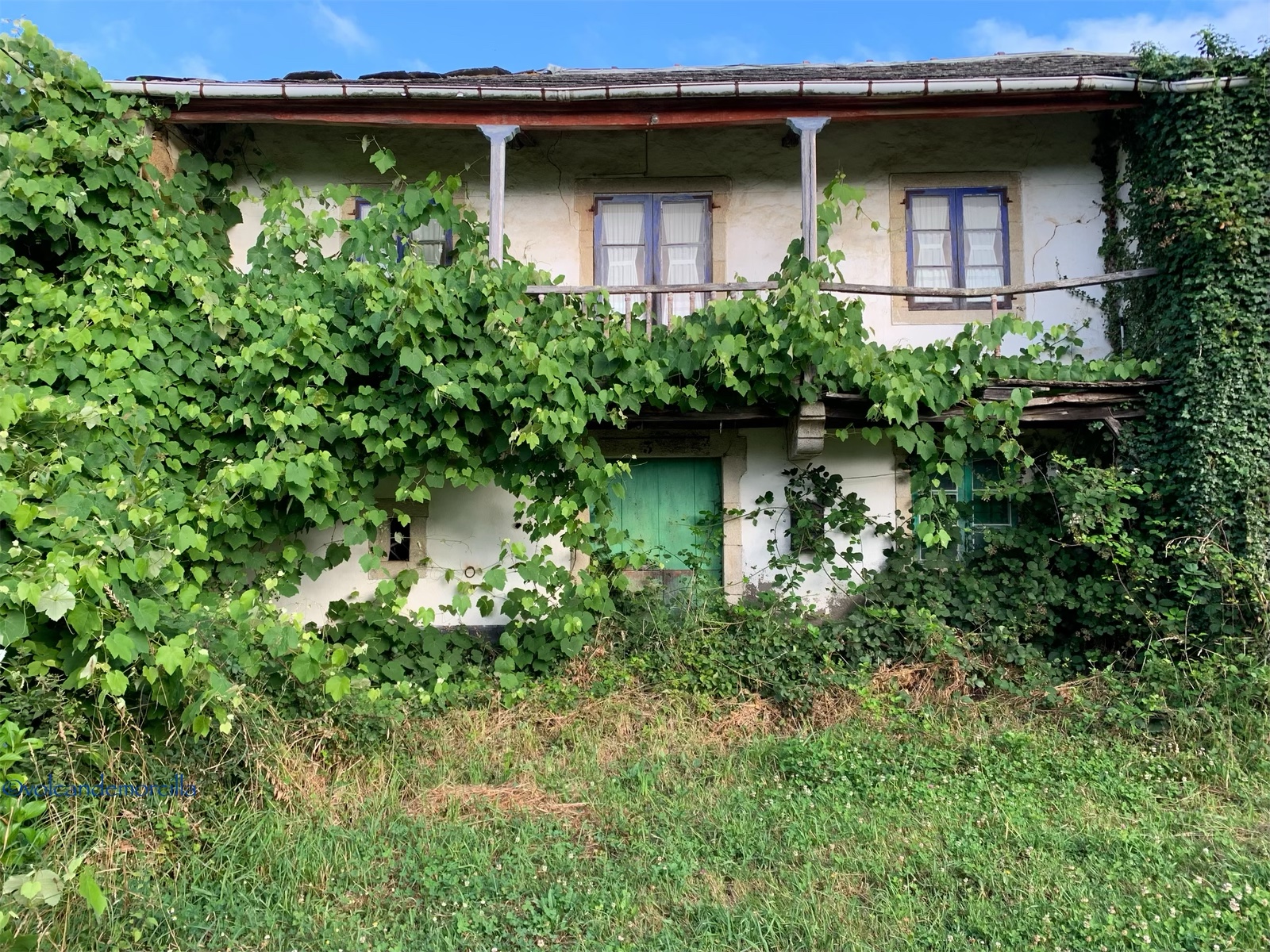
La vegetación exuberante las está asaltando y cubriendo. Me da pena este abandono. Hoy día en el interior de España, casi sólo vive gente muy mayor. En unos años todo esto estará abandonado.
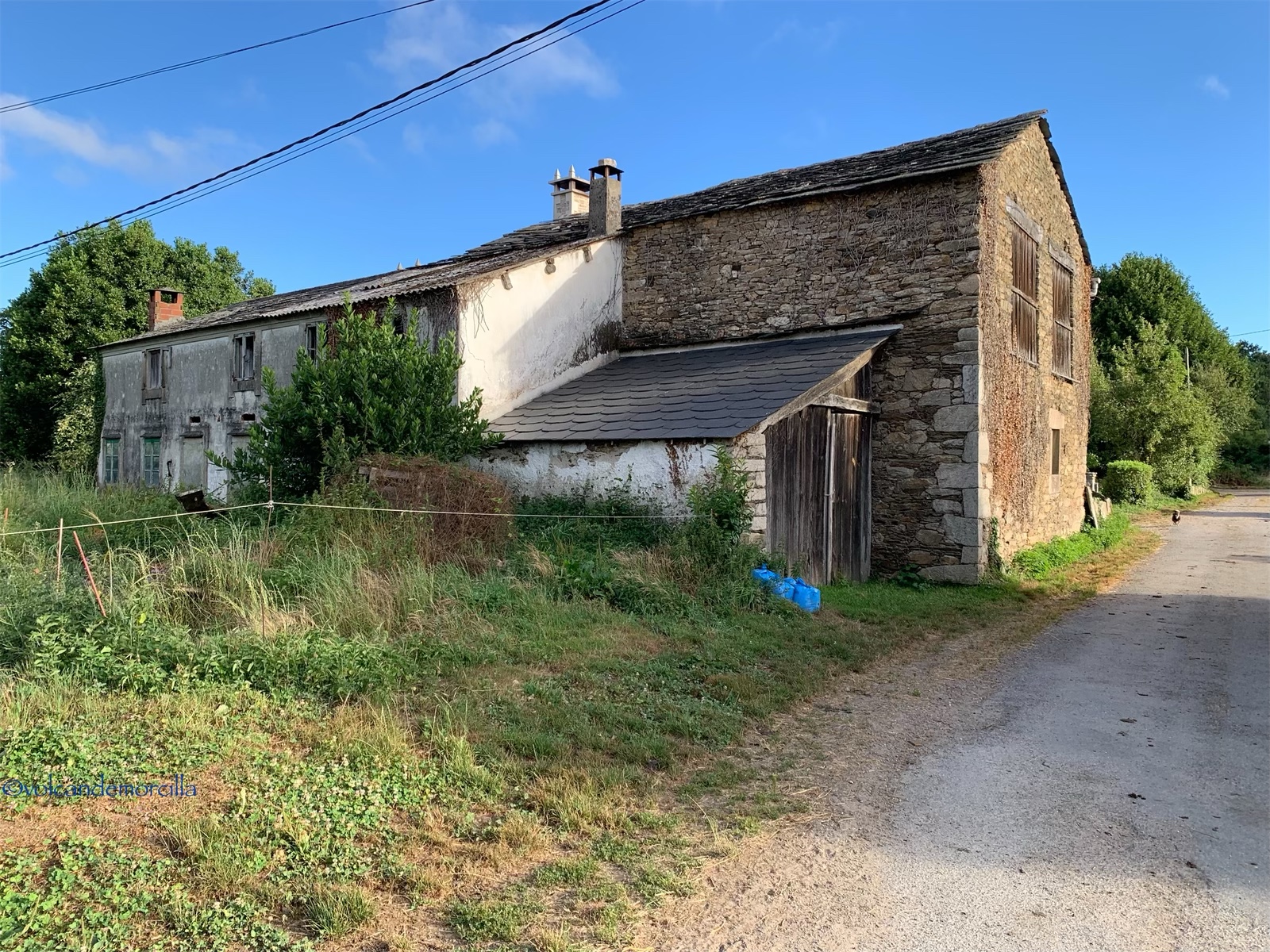
Aunque el sol hoy es fuerte, hay una brisita que alivia su calor.
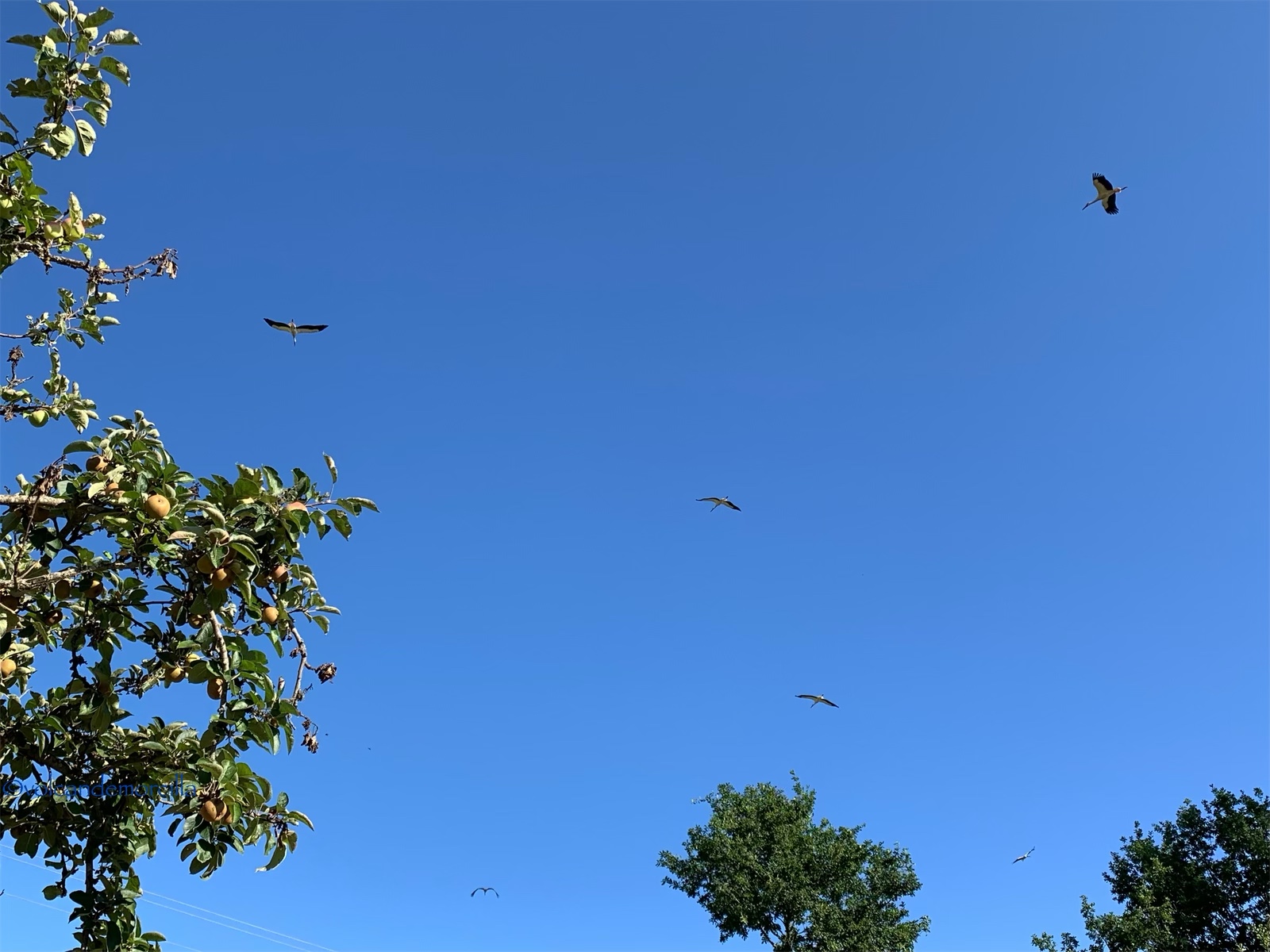
En un recodo, mientras hacíamos la foto de una casa, han salido volando cinco o seis cigüeñas. En esta época deberían haber emigrado. En algunos prados se oye el croar de ranas, posiblemente serán el alimento de estas aves.
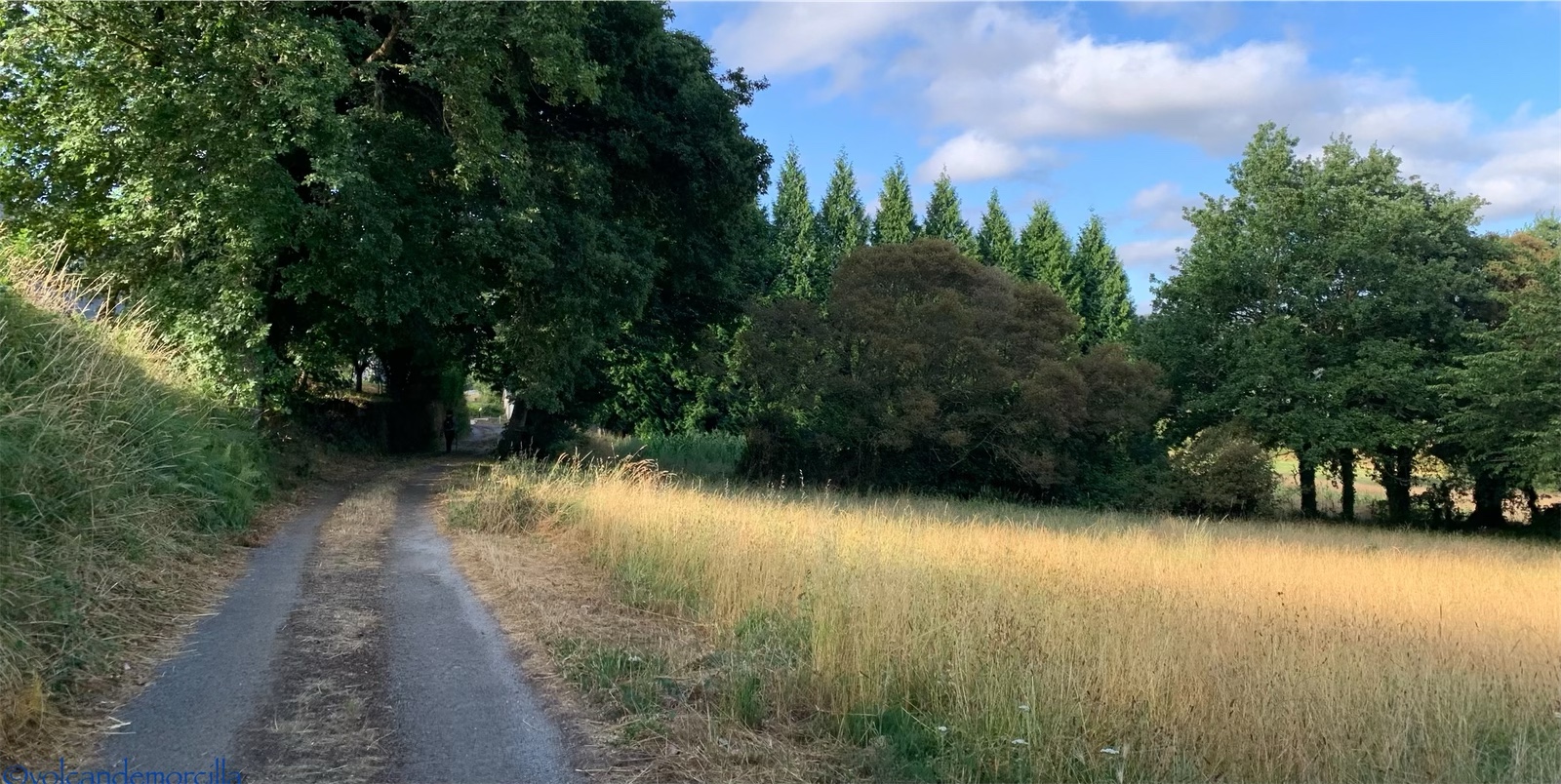
Mientras caminamos, se oye el piar de los pájaros y, en algunos lugares, los graznidos de los cuervos.

La etapa de hoy es muy entretenida. Cruzamos otro puente de piedra, hay caseríos y granjas aisladas y me entretengo haciéndoles fotografías.
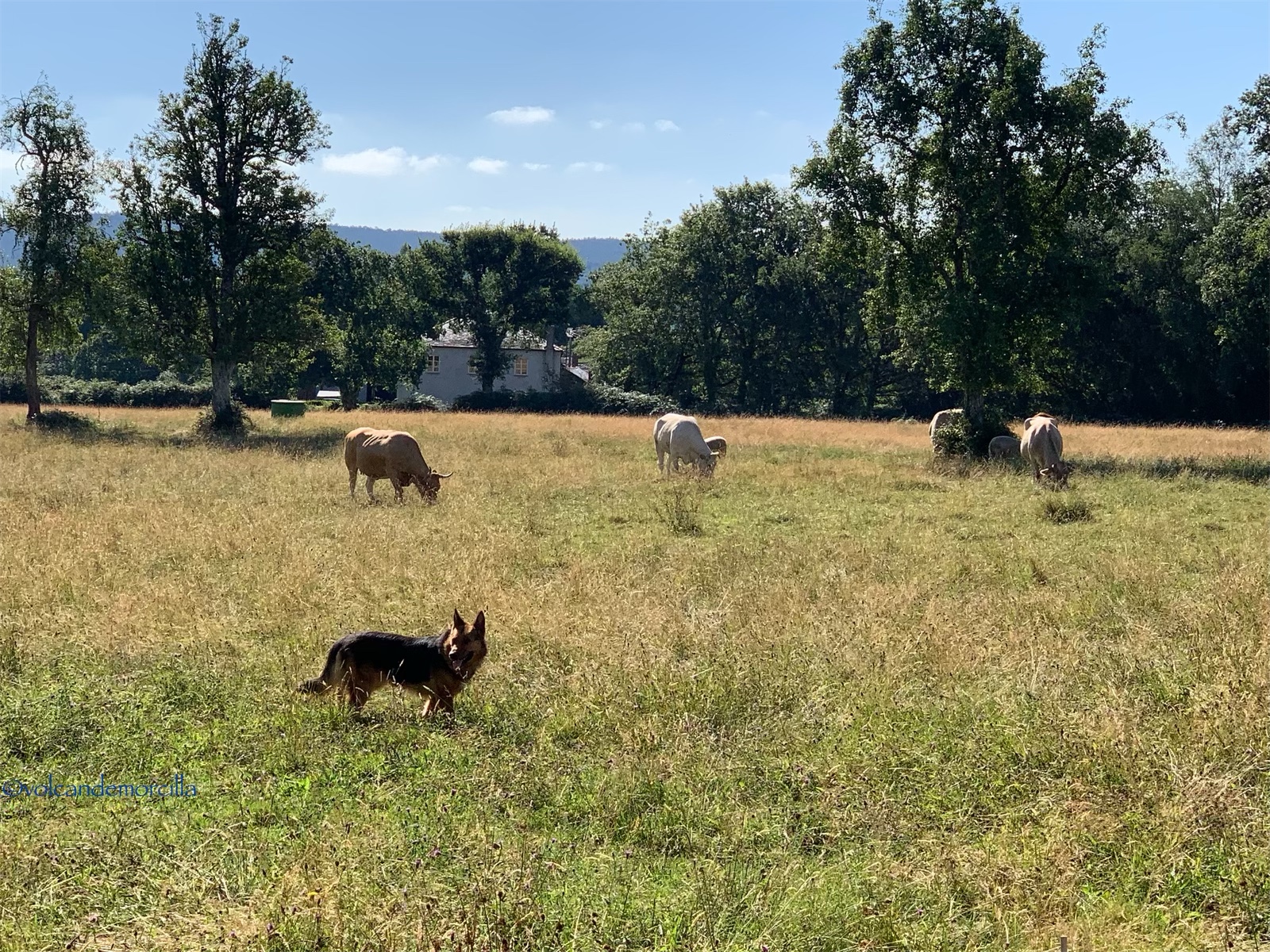
También hay ganado vacuno y un perro pastor belga correteando por ahí.

Coincidimos con unos peregrinos jóvenes en un bar. Charlamos un poco y les explico cómo deben sellar la credencial para luego obtener la Compostela en Santiago. No saben mucho y es su primer Camino. Más adelante no nos pasan. Han debido intentar adelantar yendo por la carretera. Grave error! porque el Camino es para disfrutarlo con todos los sentidos, no para hacer una competición. Al menos, eso pensamos nosotros.
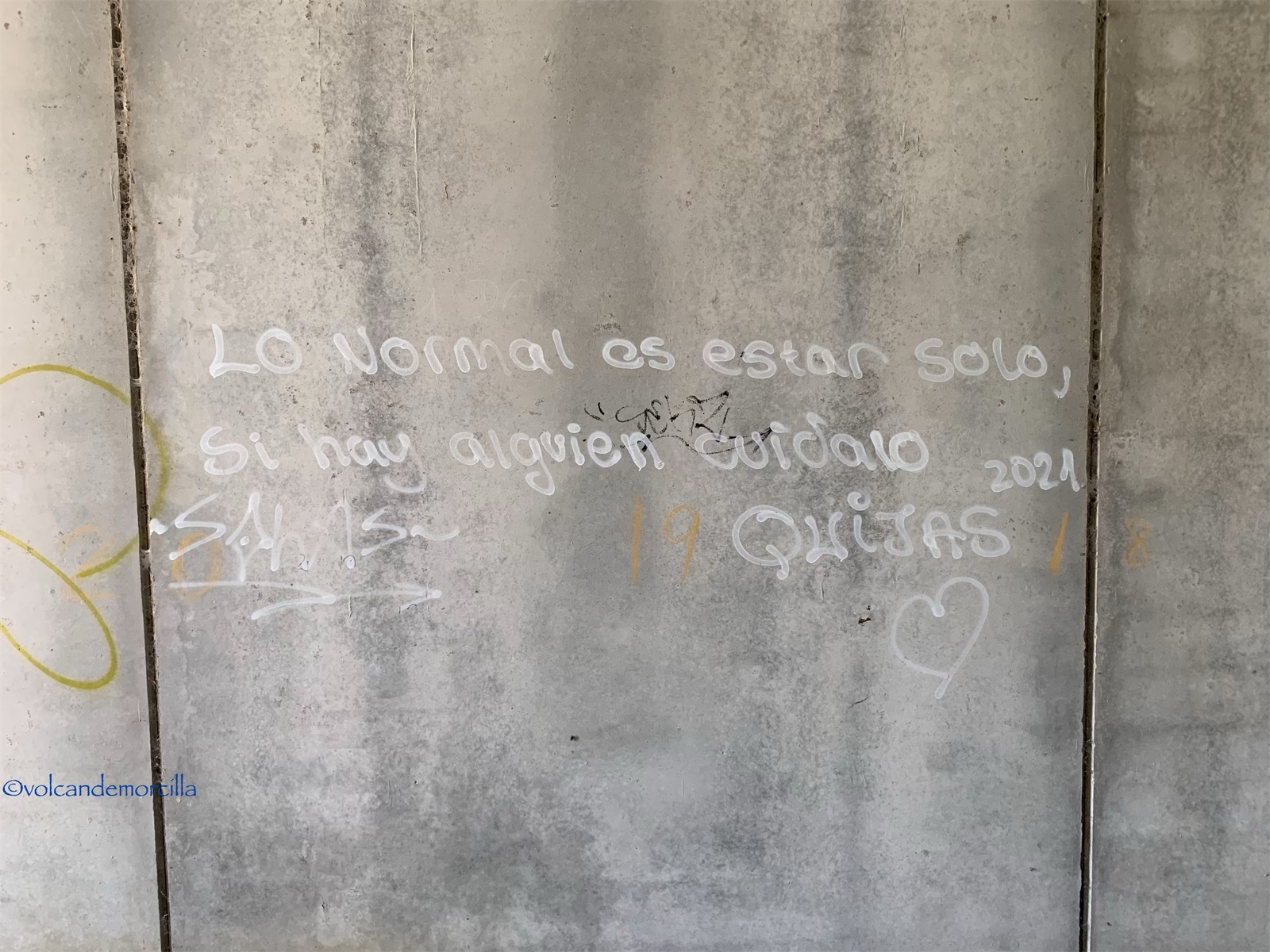
Cuando cruzamos bajo una carretera en el muro, un tal Quijas ha pintado, el año pasado, la siguiente frase que me parece muy acertada y me hace reflexionar: “Lo normal es estar solo, si hay alguien cuídalo”.
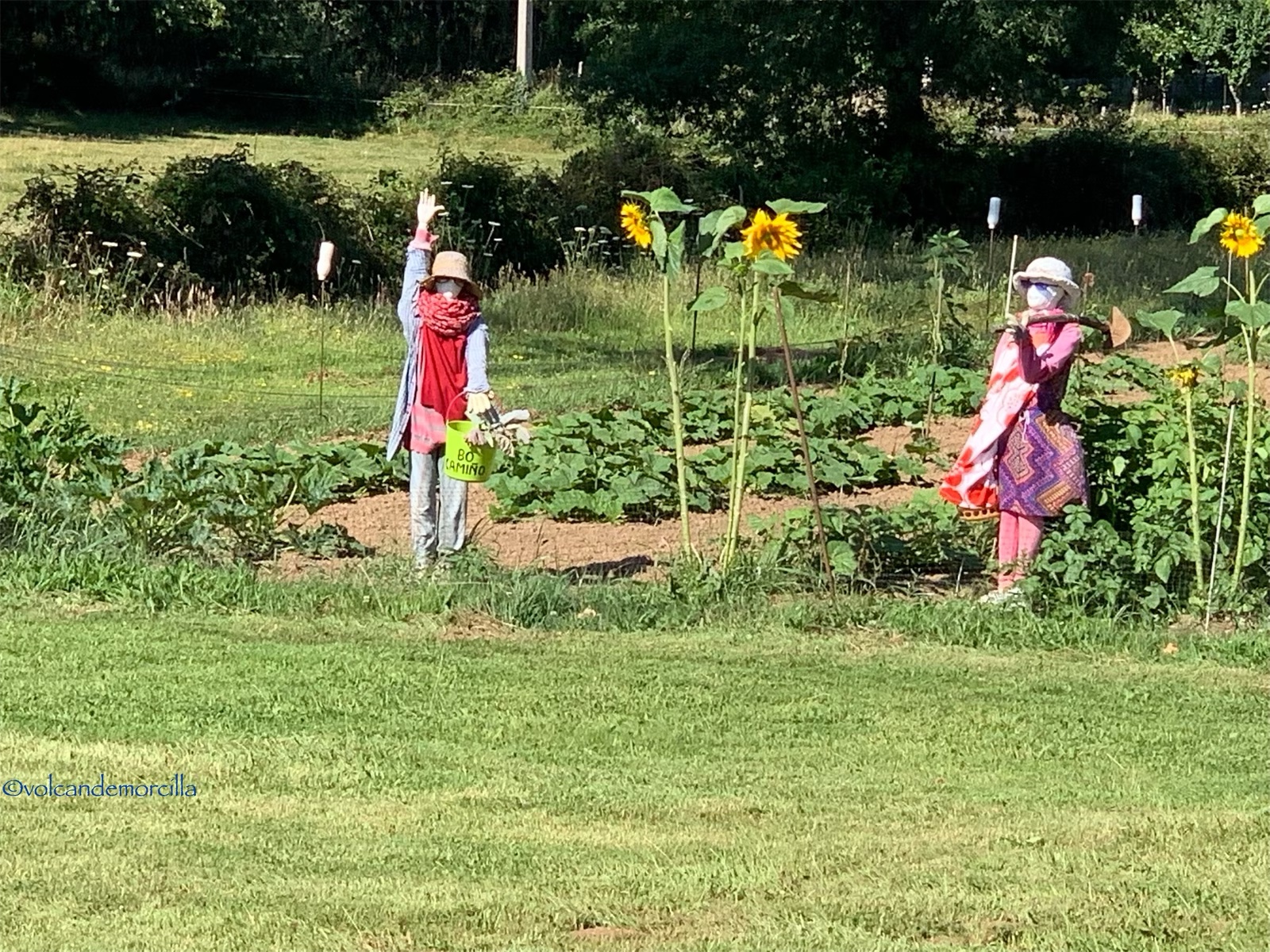
Unas figuras nos saludan desde lejos y nos desean “Bon Camino”. Se agradecen éstas cosas que entretienen y animan.
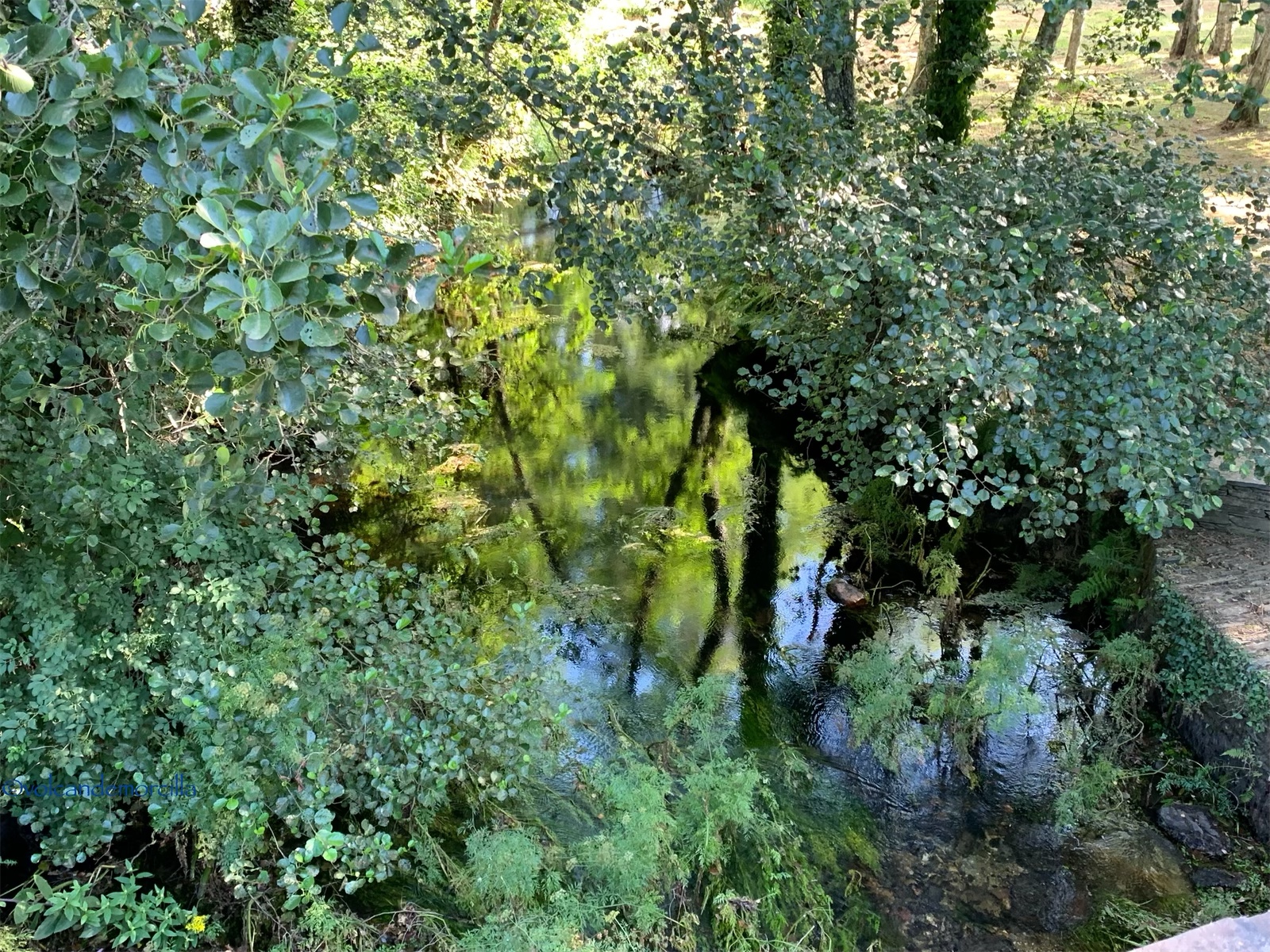
Actualmente los peregrinos se dicen “Buen Camino” cuando se saludan. En el medievo la frase empleada era “Ultreia et Sueia” que significa “Mas allá y más arriba”. Había incluso una canción con este estribillo. Tan famosa fue que quedó consignada en el Codex Calixtinus (manuscrito iluminado del siglo XII que recoge toda la información disponible en esa época sobre el Apóstol Santiago y el Camino de Peregrinación a Compostela) Os dejo un enlace de YouTube por si la queréis escuchar :
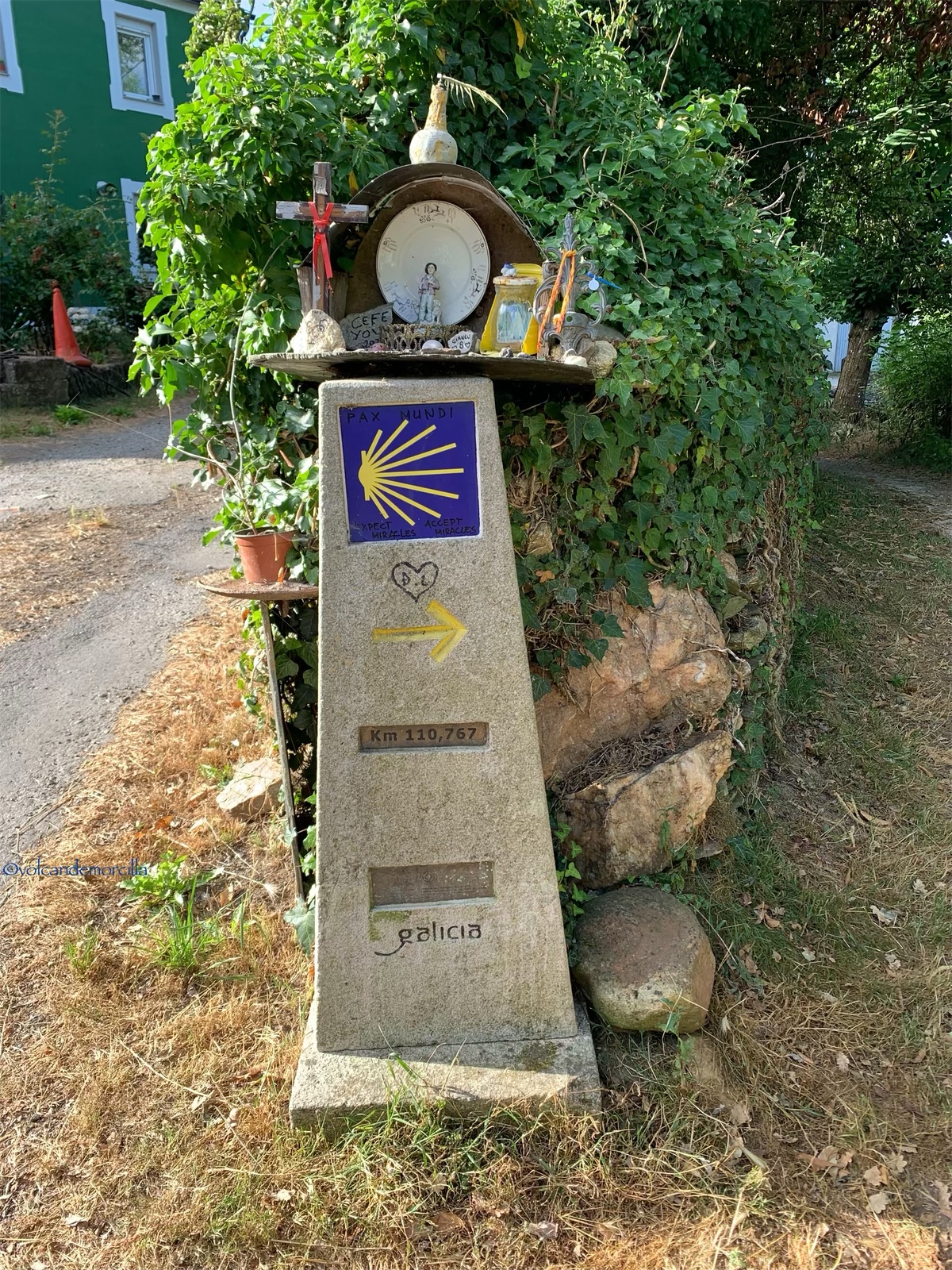
Este Camino, el del Norte por la Costa, está muy bien señalizado con mojones dispuestos en aquellos cruces dónde puede haber dudas. También hay las clásicas fechas amarillas, pero muy pocas. Los mojones, además de señalar la dirección correcta marcan la distancia que queda hasta Santiago de Compostela y ayudan a conocer la distancia para terminar la etapa.
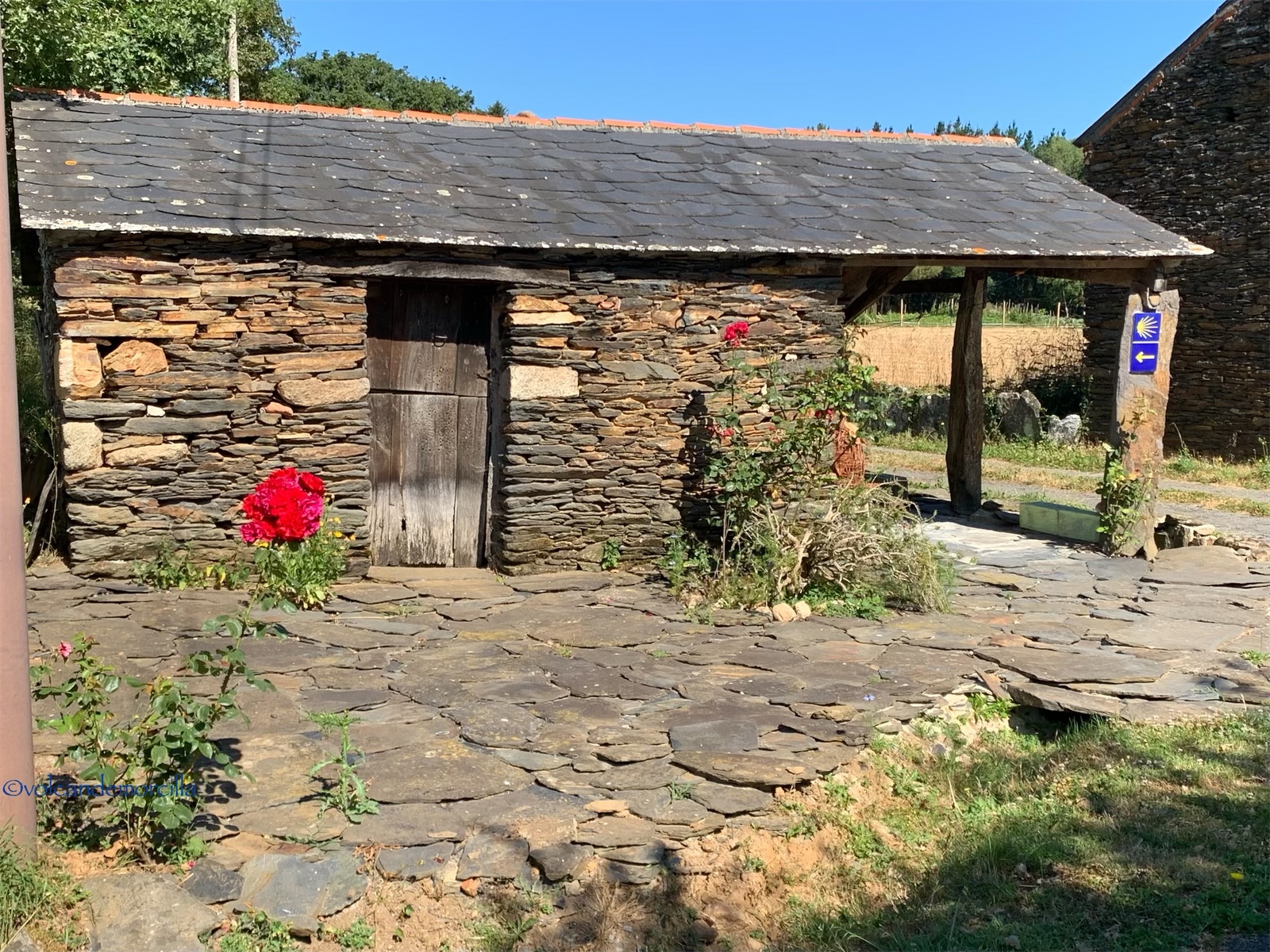
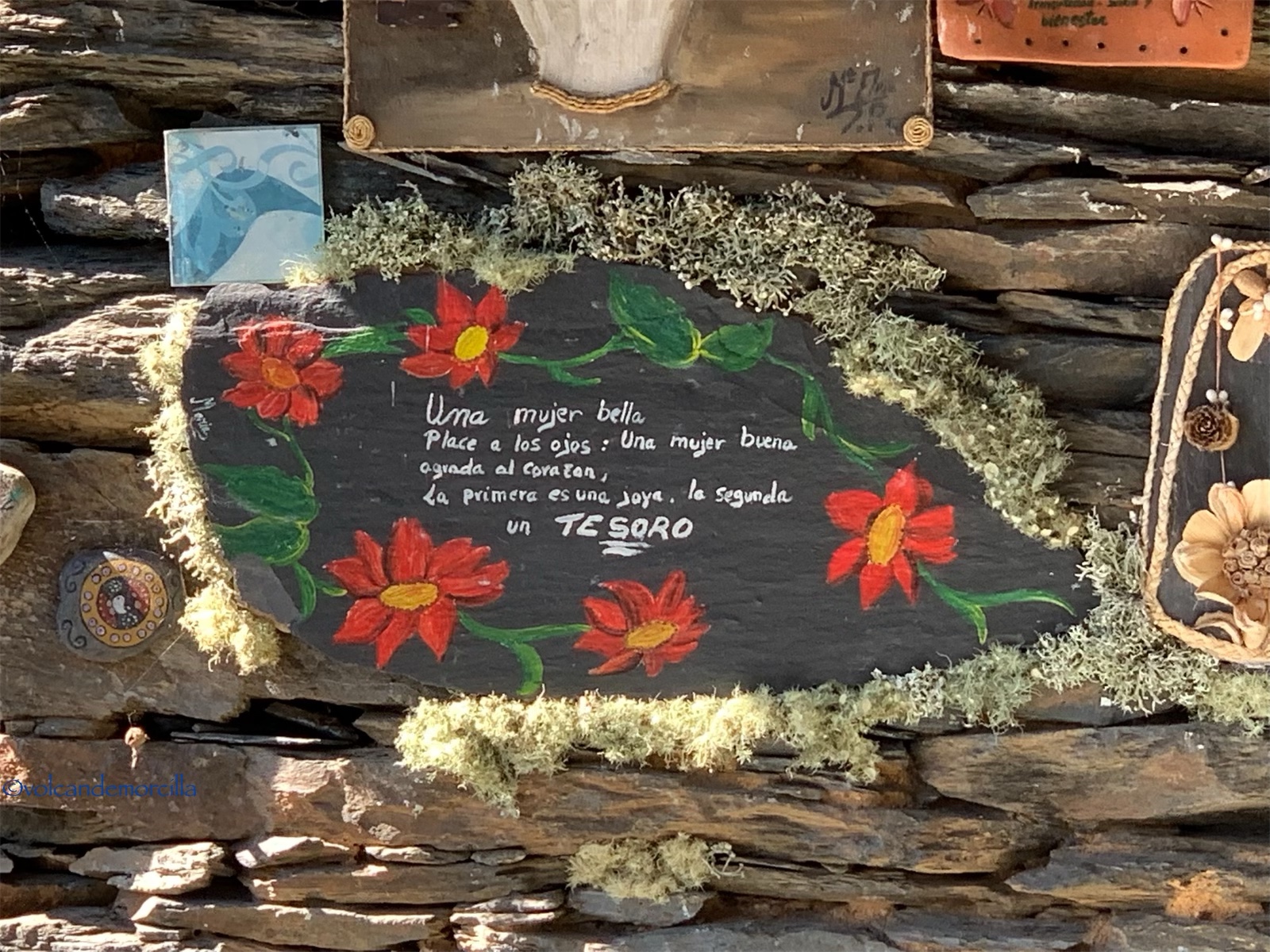
Encontramos una casita dónde la dueña, muy artista, ha puesto cuadros y lemas diversos. Este sobre la mujer buena me gustó. Dice lo siguiente: “Una mujer bella place a los ojos, una mujer buena agrada al corazón. La primera es una joya, la segunda un TESORO”.
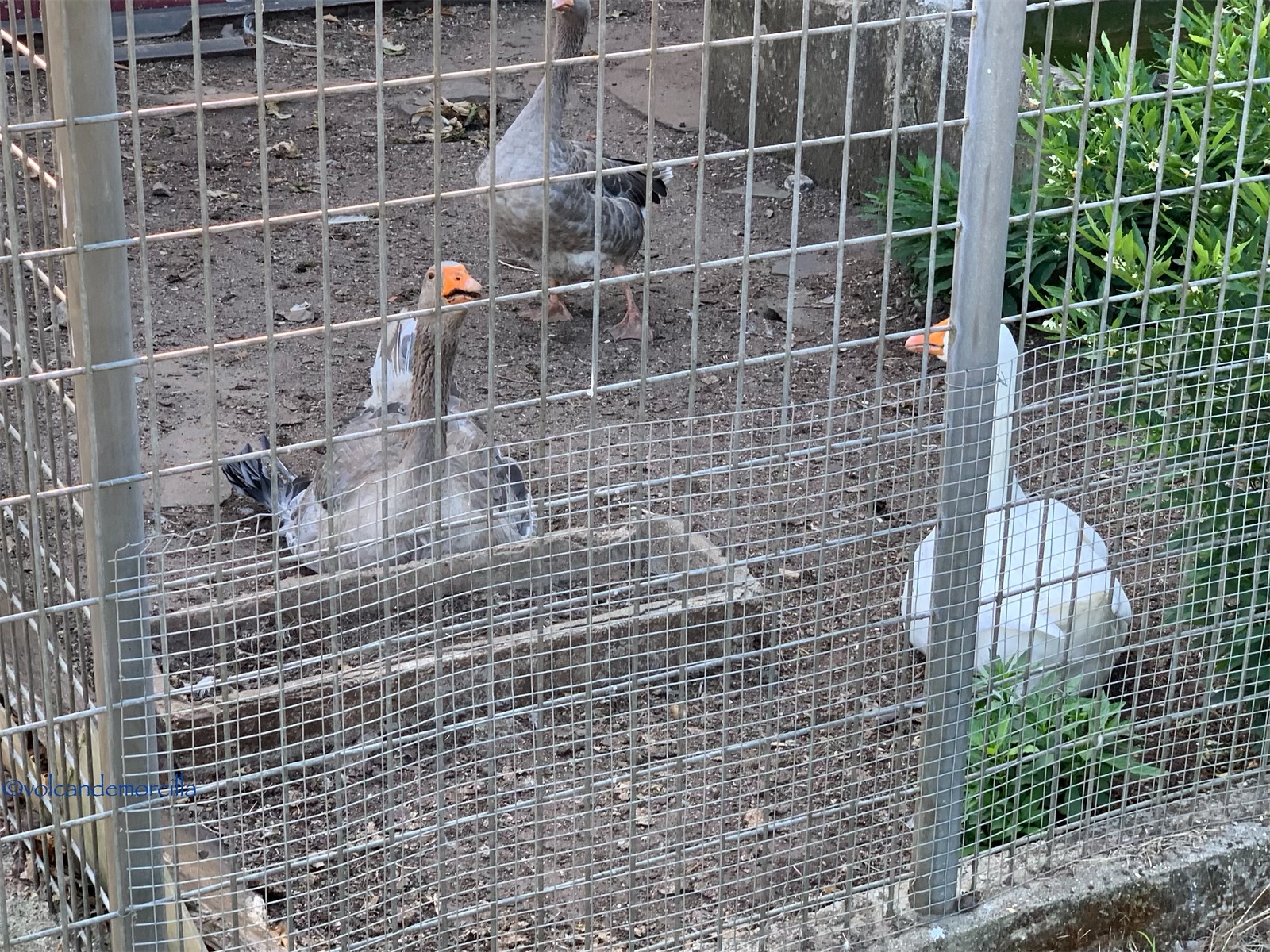
Pasamos junto a una jaula dónde hay ocas. Al acercarnos, comienzan a graznar. Su sonido es muy poderoso. Dicen que los antiguos las utilizaban como centinelas para avisar, ante el menor ruido, si alguien se acercaba. Es evidente que su sonido se escucharía a muchísimos metros de distancia.
Quizás por eso, para los antiguos egipcios tenían un significado religioso que simbolizaba el renacimiento ahuyentando al mal. Estas aves emigran todos los años hacia el oeste y, por eso, tienen un significado especial en el Camino de Santiago que también se denomina el Camino de las Ocas. Según los estudiosos del tema jacobeo, no hay duda alguna que el famoso “Juego de Oca” es la representación del Camino de Santiago. Parece que contiene mensajes criptográficos y esotéricos de las órdenes templarias que cuidaban del camino de peregrinación hasta la tumba del Apóstol. Es un tema muy interesante y que ahora, por razones de tiempo, no me puedo extender para explicarlo.
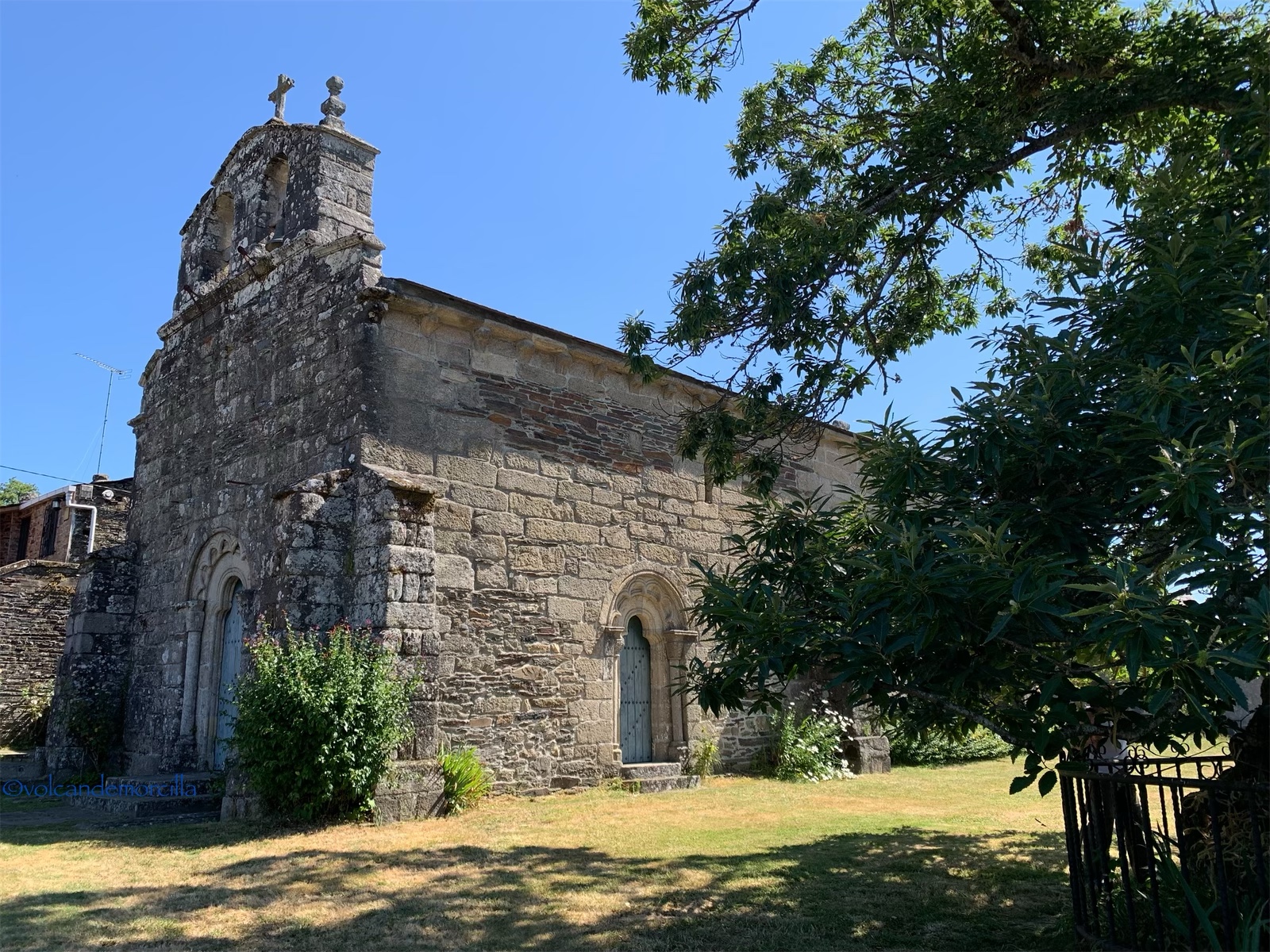
Llegamos a Baamonde dónde hay una iglesia románica del siglo IX en honor a Santiago. Justamente, cuando llegamos y subimos las escaleras para llegar al cruceiro, estando ante la puerta, comienzan a sonar las campanas: son las 12:00. Más puntualidad no podemos tener! Nos reímos mucho con eso.
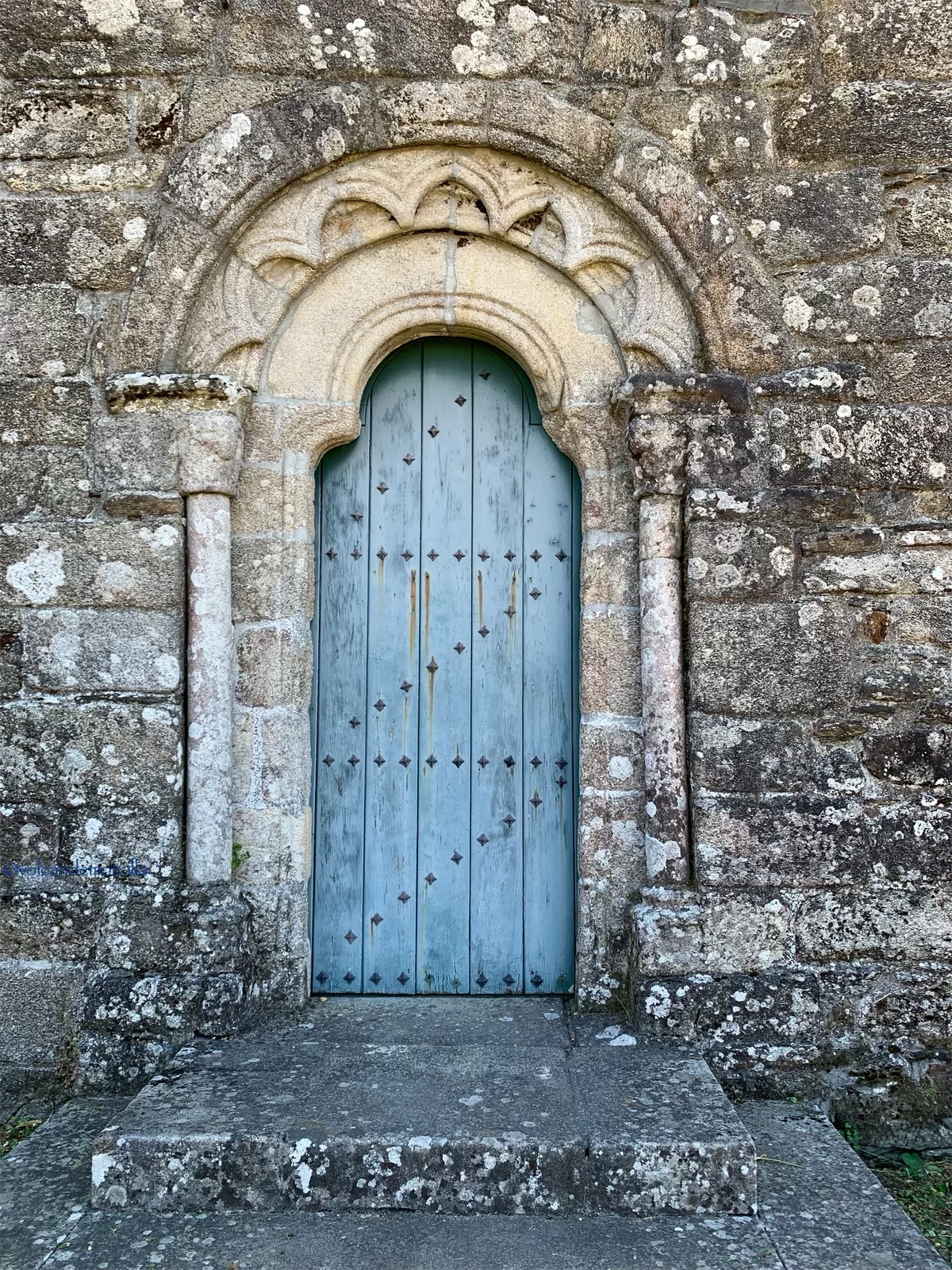
Junto a la Iglesia de Santiago, hay un gran castaño centenario que en 1972 quisieron talar. Tiene una gran hendidura y se puede entrar al interior. El escultor local Victor Corral Castro se metió dentro y esculpió una Virgen del Rosario en honor a la patrona local y con ello impidió la desaparición del fabuloso árbol que todavía produce castañas. Dicen que es la capilla más pequeña del mundo.
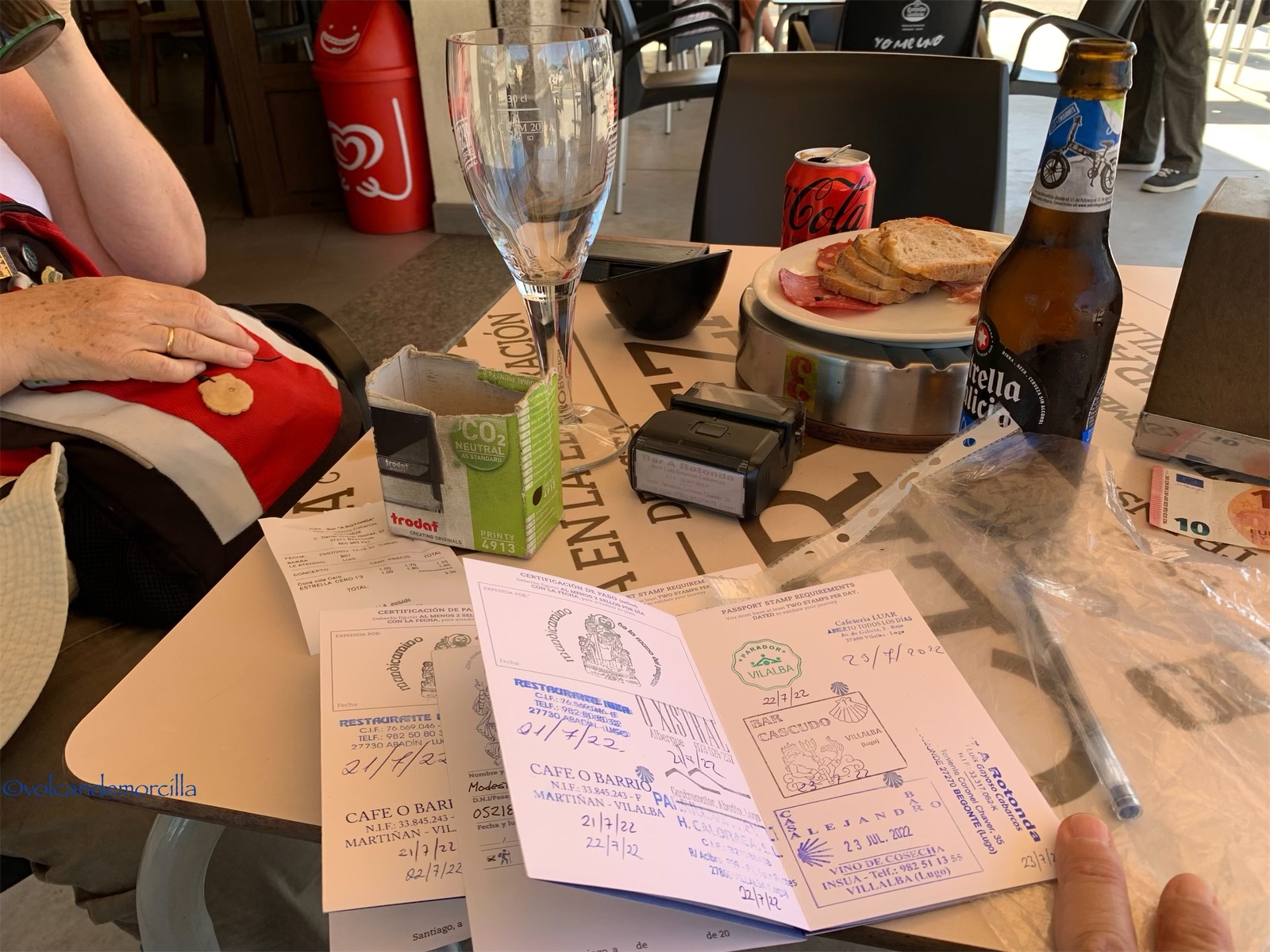
Sellamos la credencial en Baamonde, final de etapa.
Ahora sólo queda descansar y reponernos el resto del día. Siento agujetas y me duelen las piernas pero sé que es lo habitual que acontece al tercer día. Mañana más!
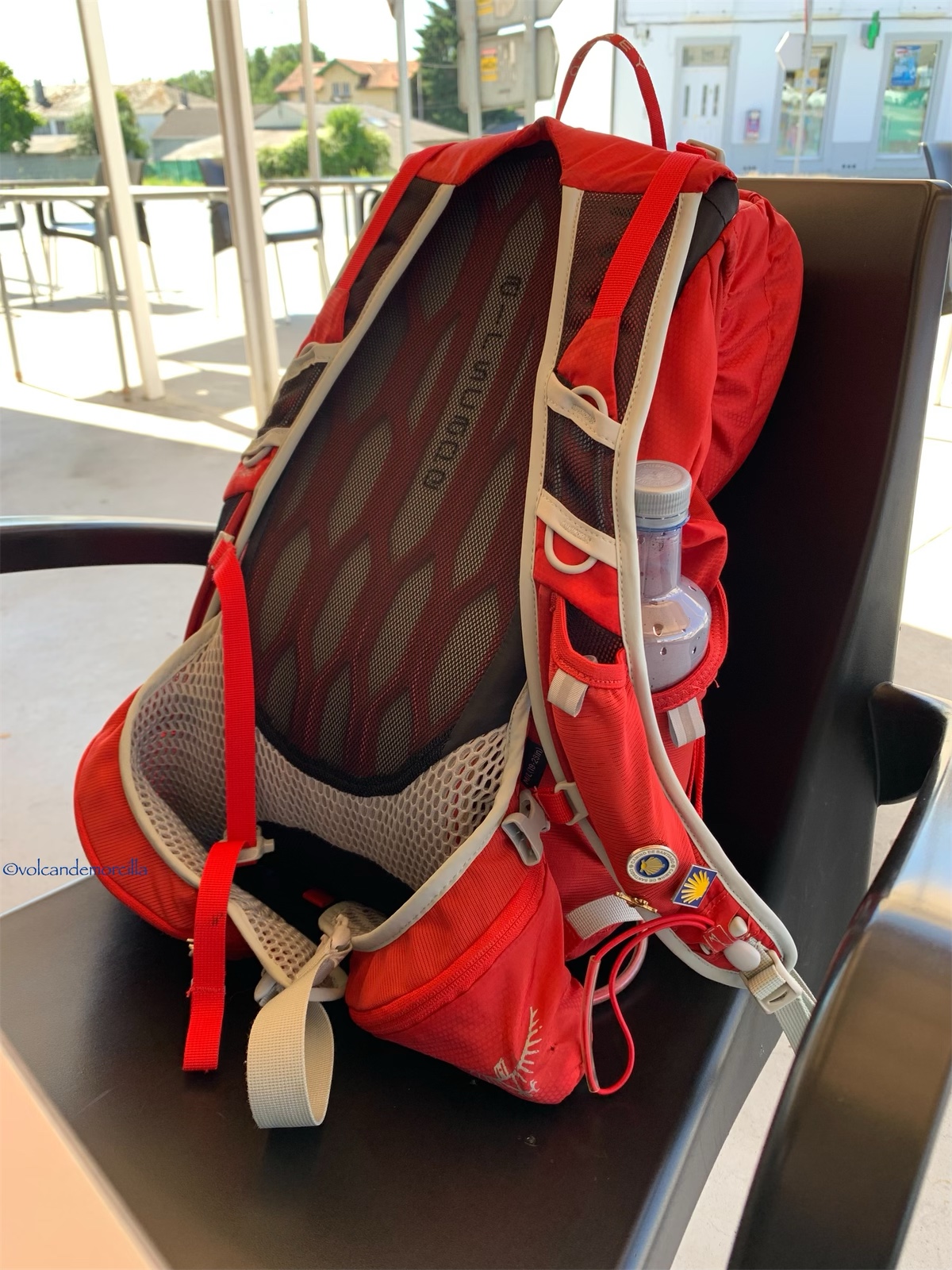
The Way of the Geese
We leave Vilalba early and arrive at San Xoan de Alba with its small neo-Gothic church and cemetery, like yesterday's in Goiriz. We make our prayer to the Holy Apostle and continue the march.
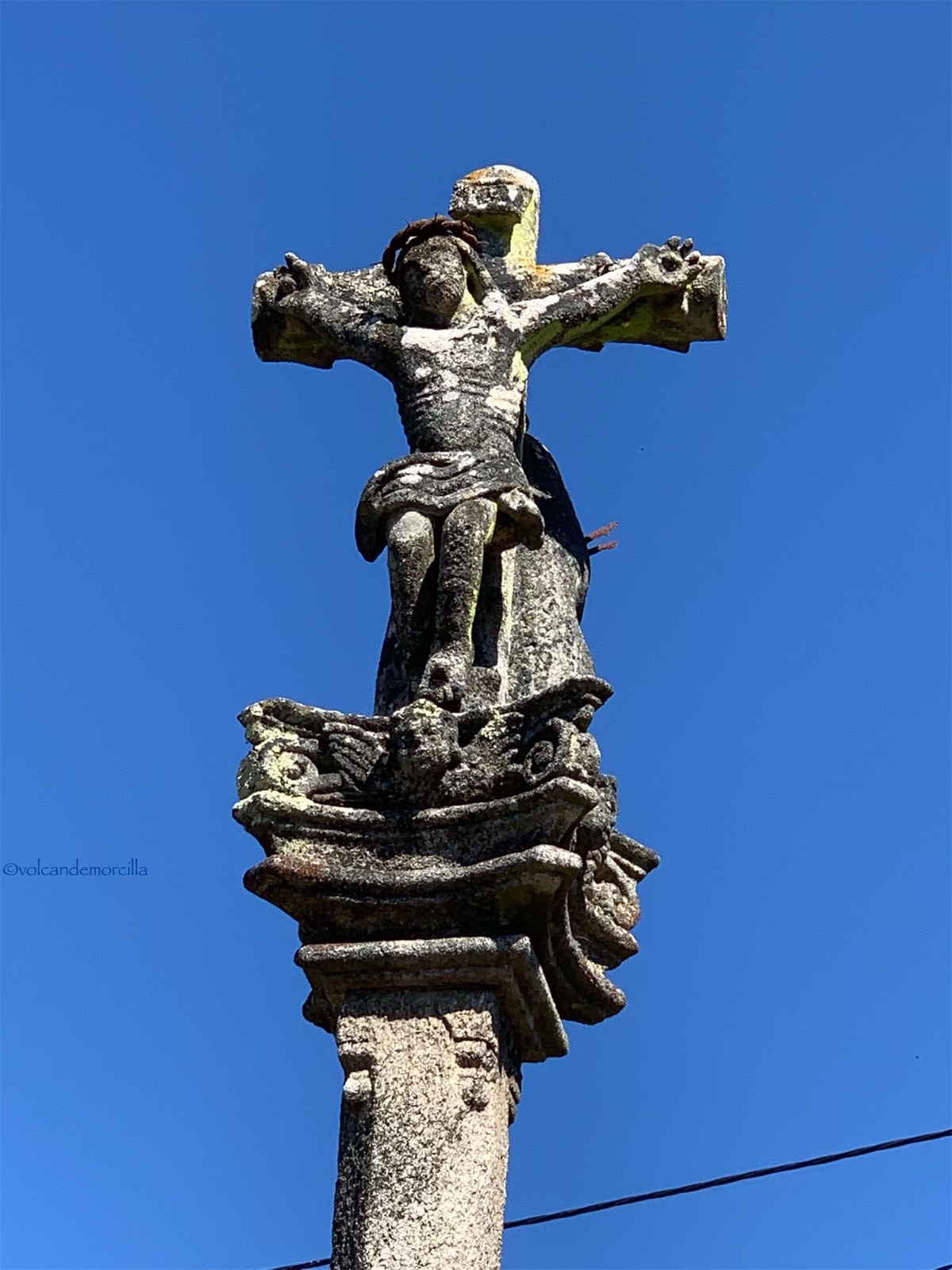
Right away, we are in a rural setting. We walk along a path that is narrower, but less rocky than yesterday.
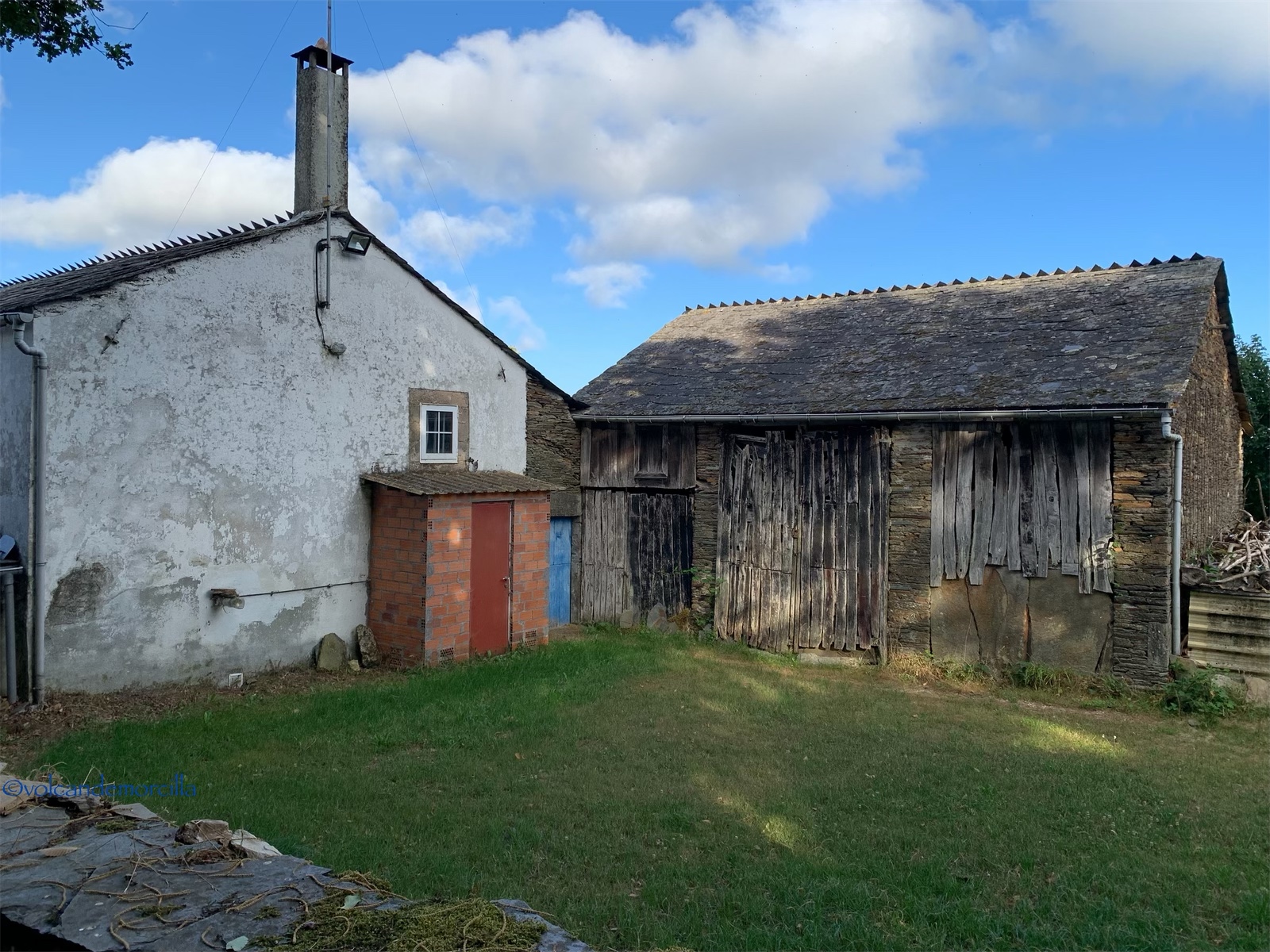
At the beginning we find some abandoned houses that, at the time, were very beautiful but now they are abandoned. The exuberant vegetation is assaulting and covering them. I am sorry for this abandonment. Today in the interior of Spain, almost only very old people live. In a few years this will all be abandoned.
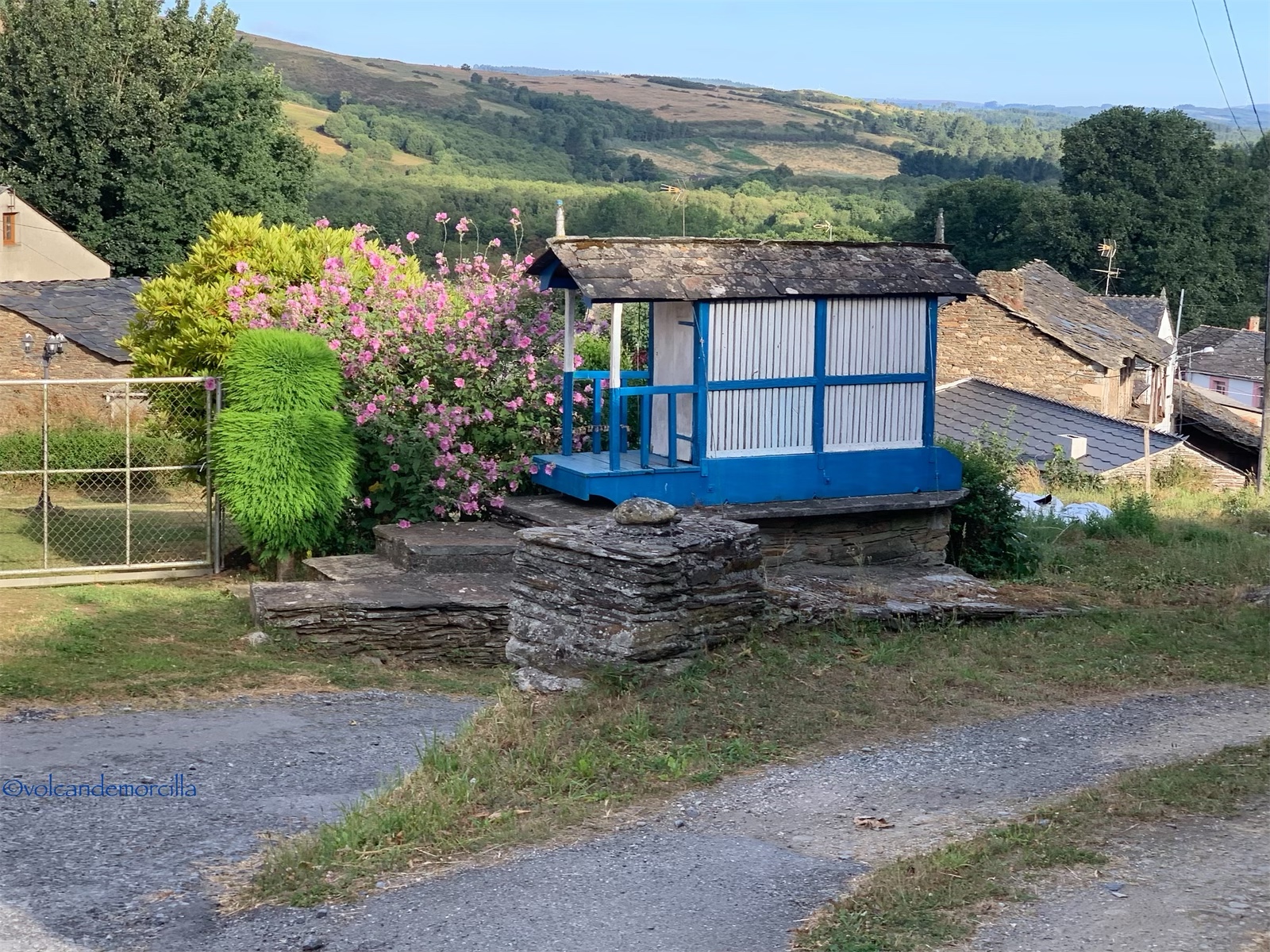
Although the sun is strong today, there is a breeze that relieves its heat.
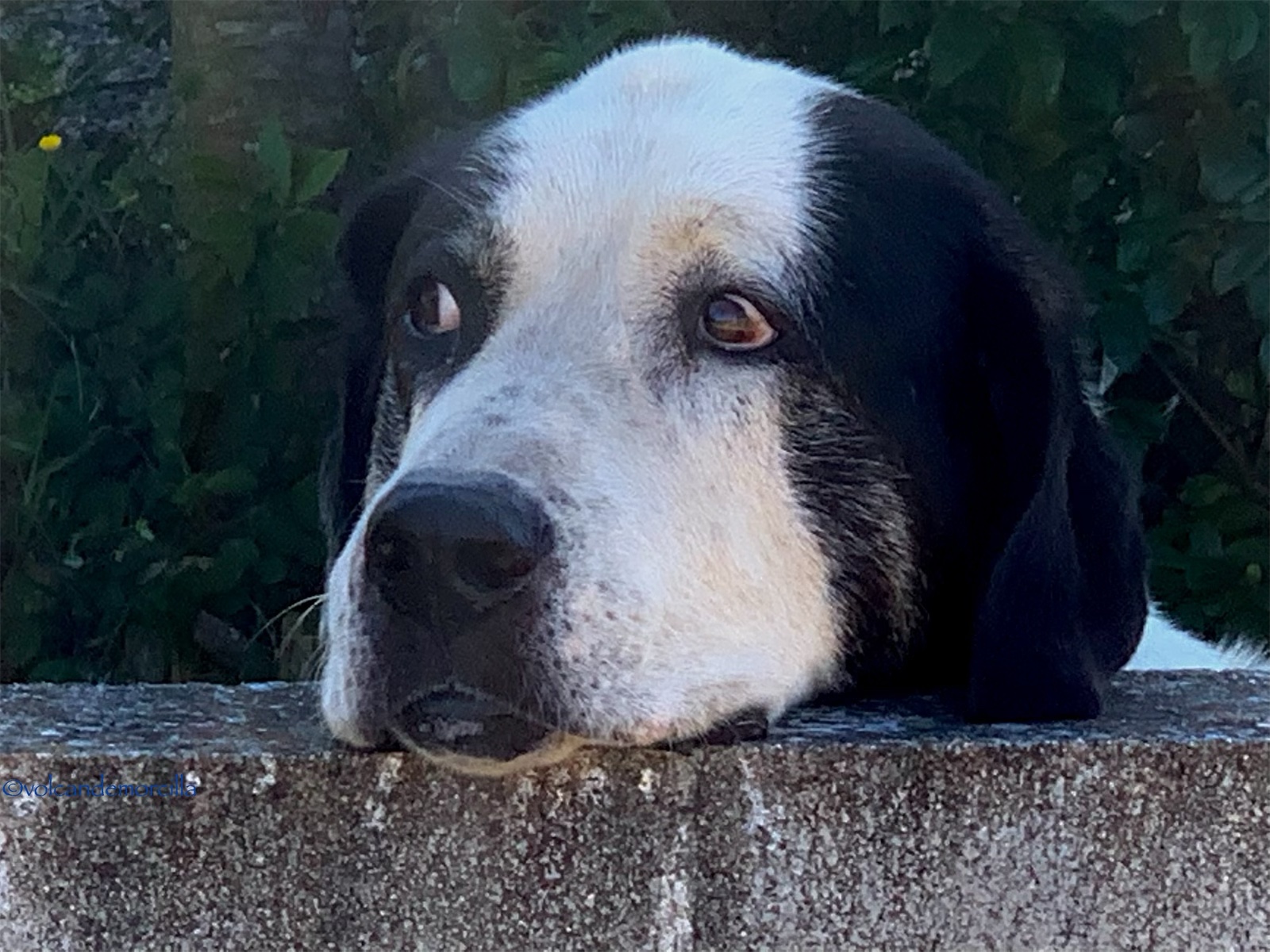
In a corner, while we were taking a photo of a house, five or six storks have flown out. By this time they should have emigrated. In some meadows you can hear the croaking of frogs, possibly they will be the food of these storks.
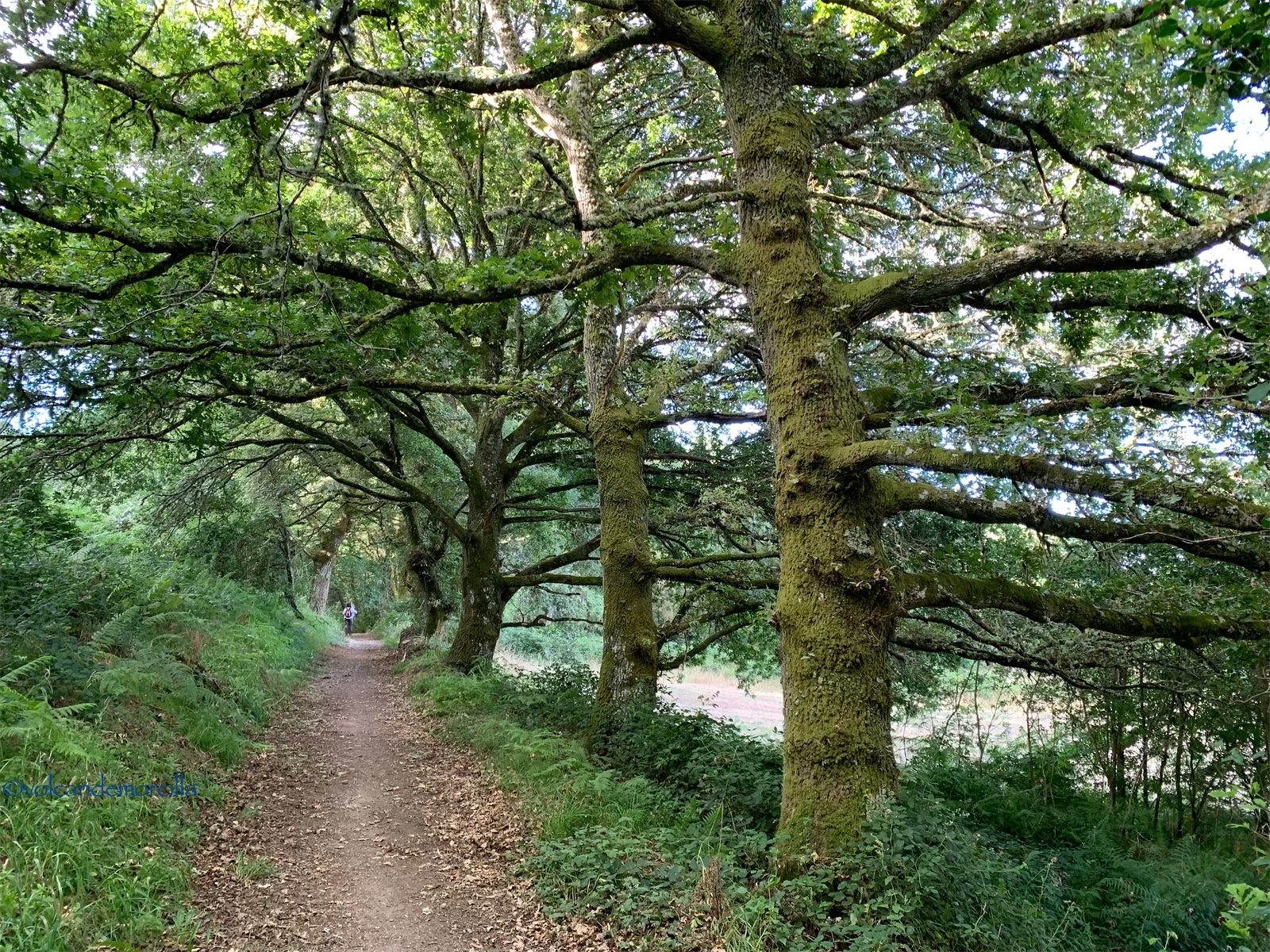
As we walk we hear the chirping of birds and, in some places, the cawing of crows.
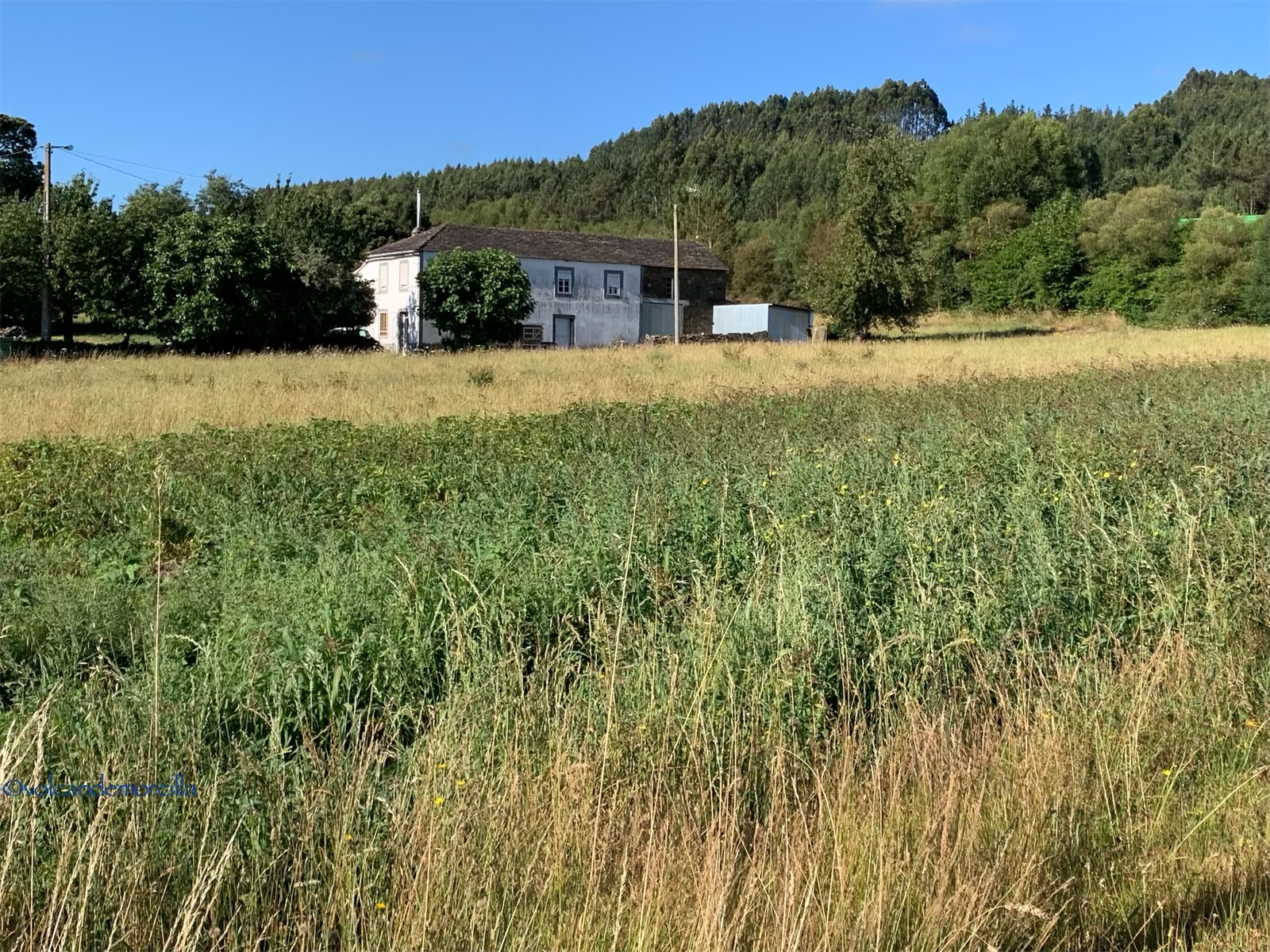
Today's stage is very entertaining. We cross another stone bridge, there are hamlets and isolated farms and I amuse myself taking pictures of them.
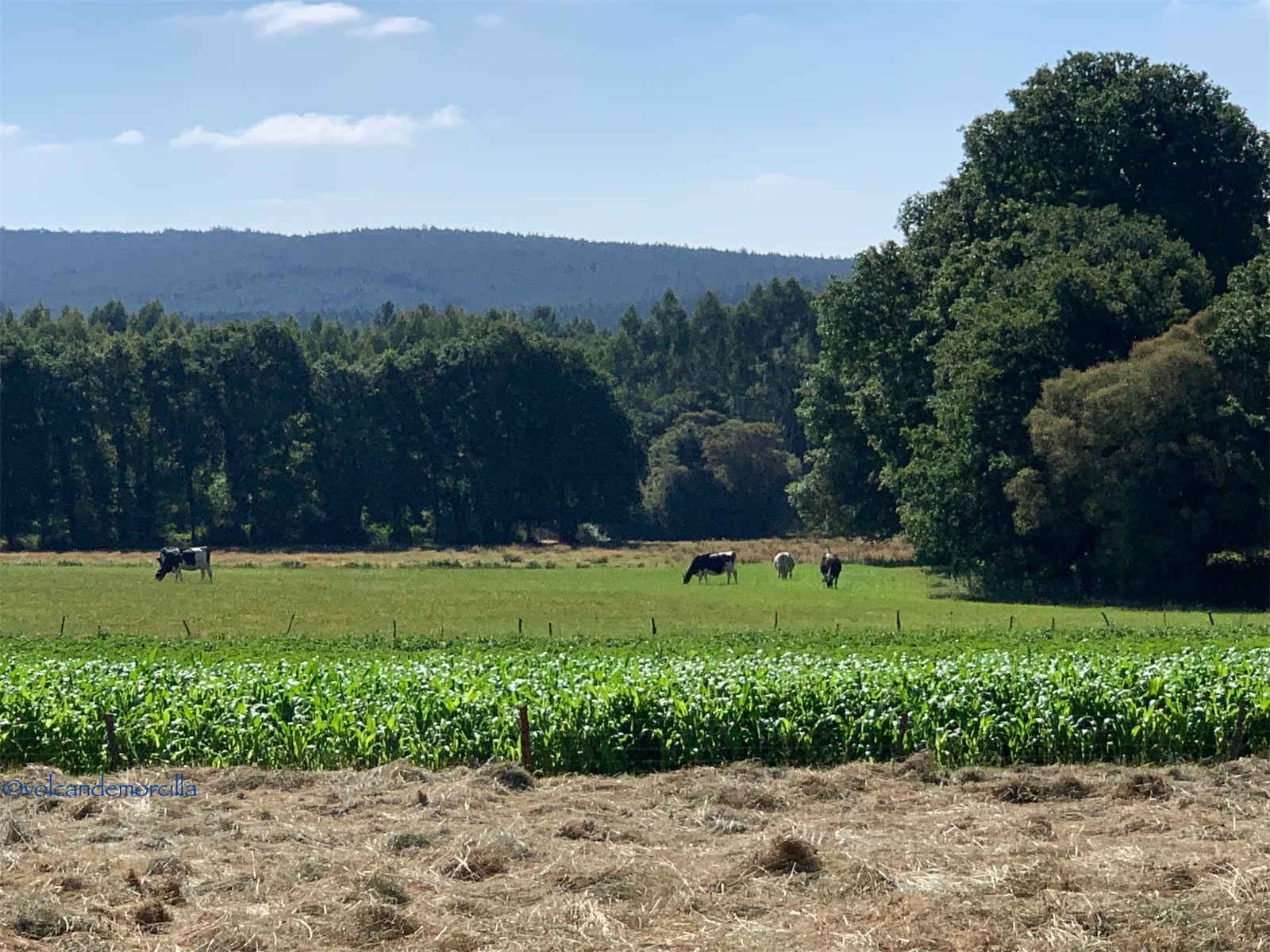
There are also cattle and a Belgian Sheepdog running around.
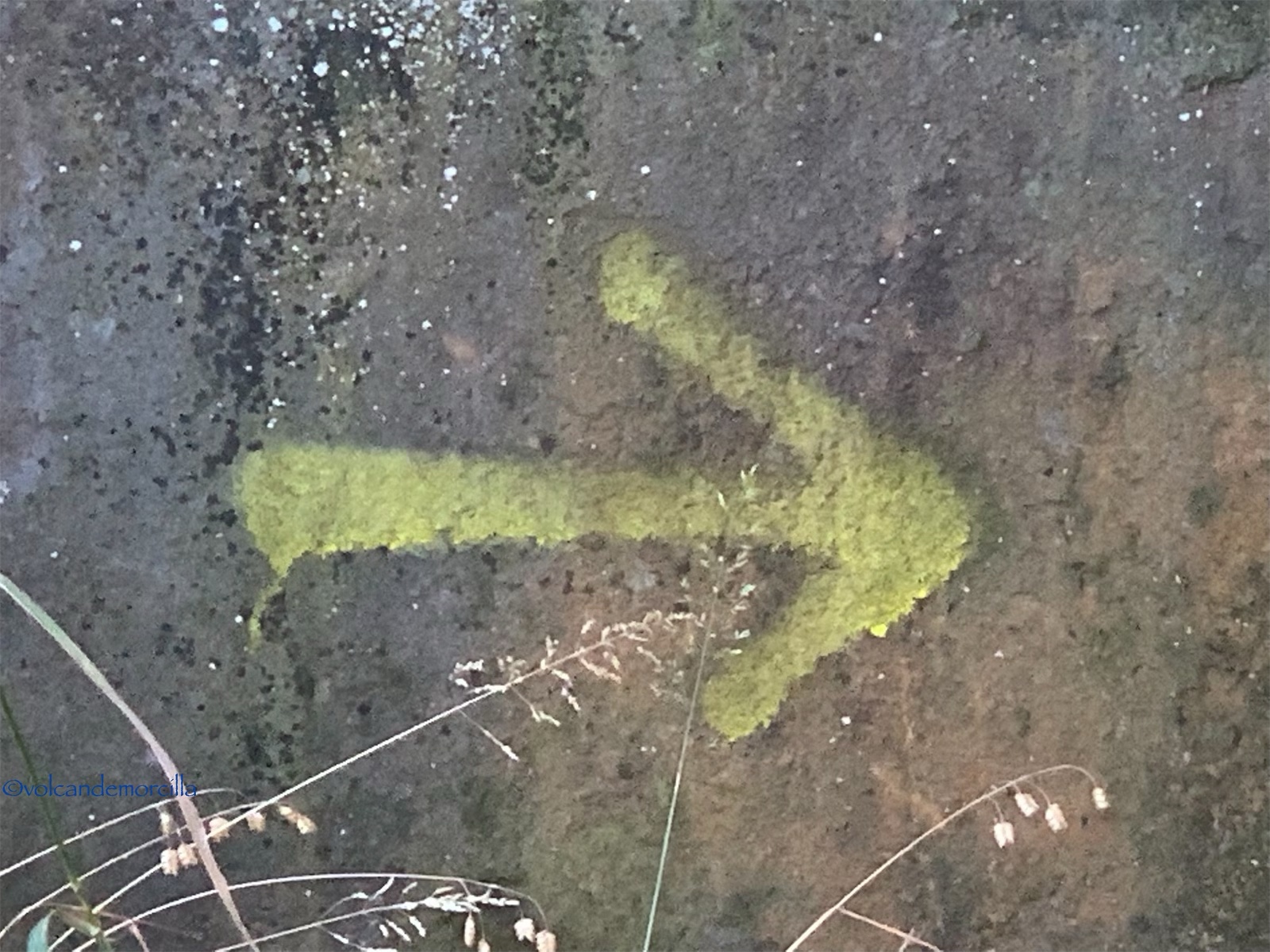
We met some young pilgrims in a bar. We chat a bit and I explain to them how they have to stamp the credential to later obtain the Compostela in Santiago. They don't know much and it's their first Camino. Later they do not overtake us. They must have tried to overtake going down the road. Serious mistake! because the Camino is to be enjoyed with all the senses, not to compete. At least, that's what we think.
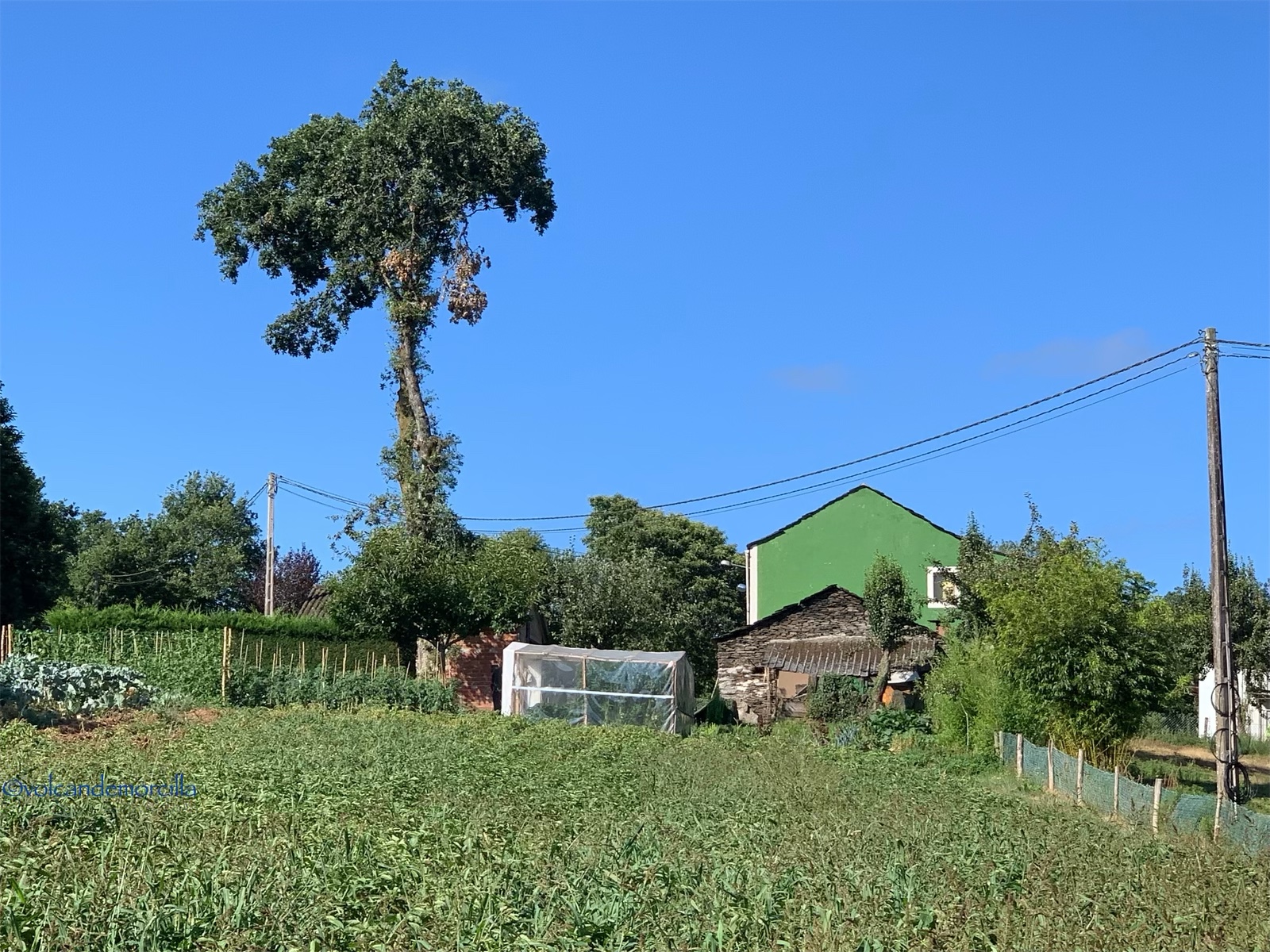
When we cross under a road in the wall, a certain Quijas has painted, last year, the following sentence that seems very accurate and makes me reflect: "It is normal to be alone, if there is someone, take care of him."
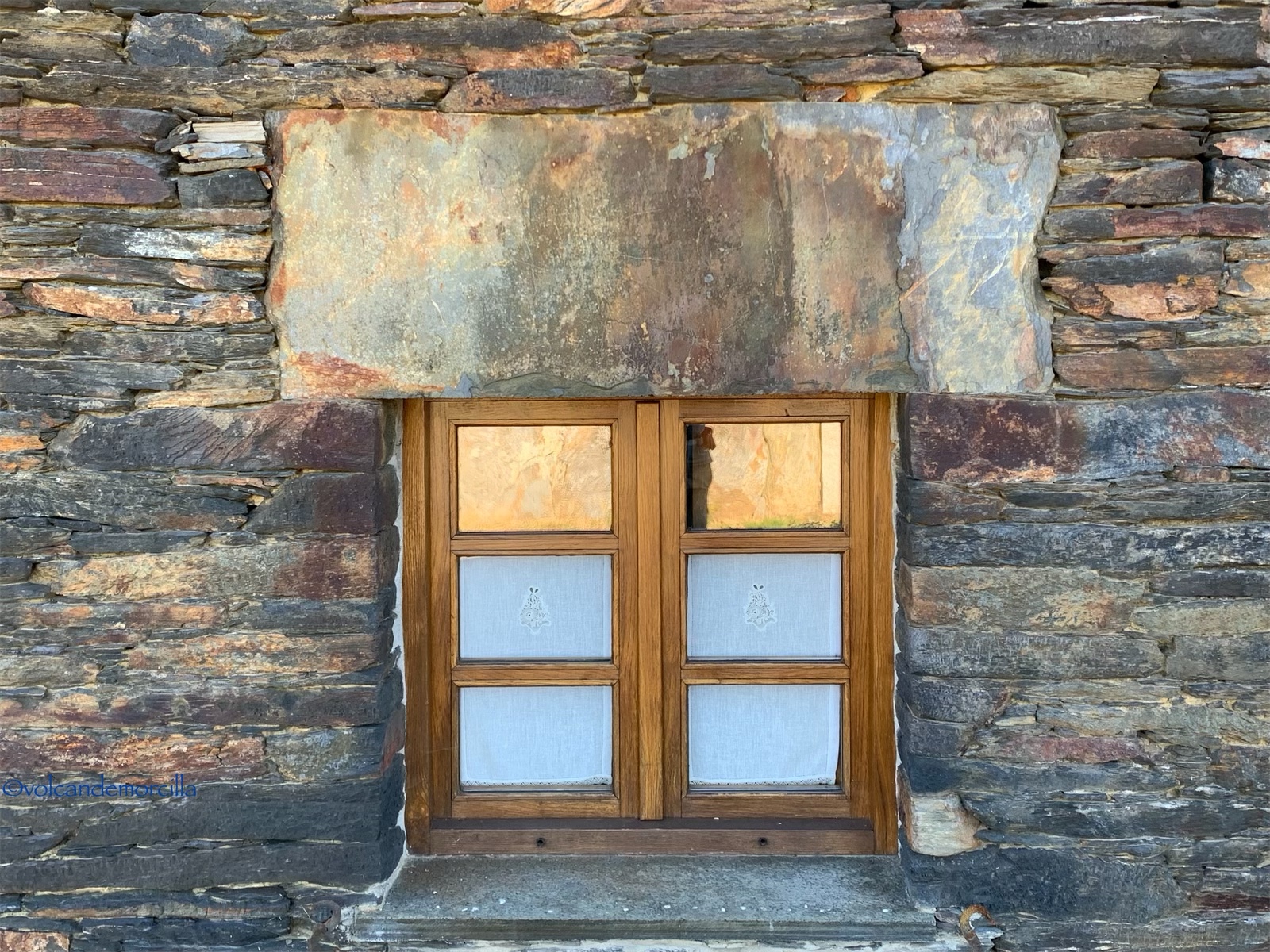
Some figures greet us from afar and wish us “Bon Camino”. These things that entertain and encourage are appreciated.
Pilgrims currently say “Buen Camino” when they greet each other. In the Middle Ages the phrase used was “Ultreia et Sueia” which means “Beyond and above”. There was even a song with this chorus. It was so famous that it was recorded in the Codex Calixtinus (illuminated manuscript from the 12th century that collects all the information available at that time about the Apostle Santiago and the Pilgrimage Route to Compostela) I leave you a YouTube link in case you want to listen to it: https ://youtu.be/XlRym0ChXQg
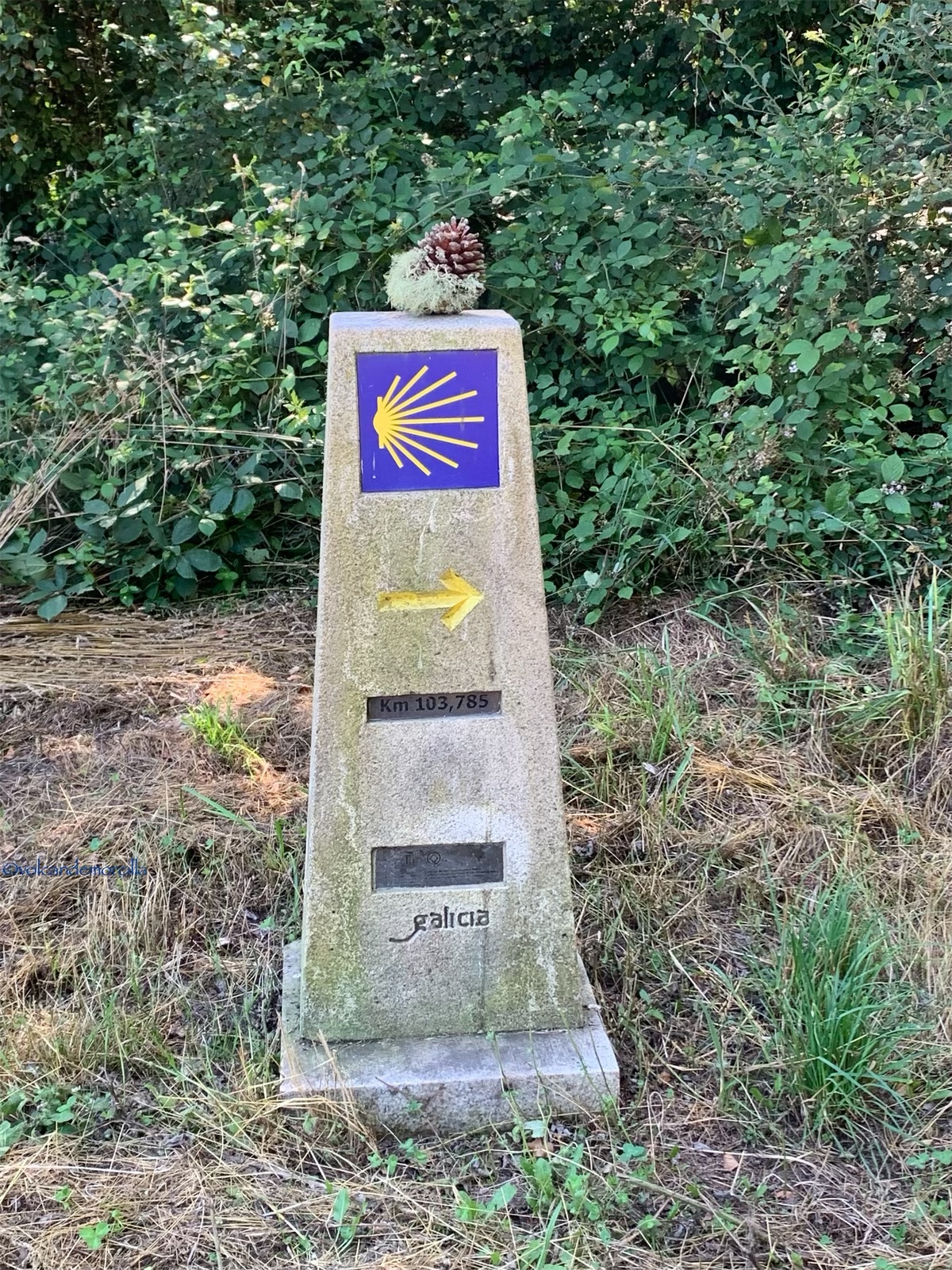
This Camino, the one from the North along the Coast, is very well signposted with milestones arranged at those crossroads where there may be doubts. There are also the classic yellow dates, but very few. The milestones, in addition to pointing out the correct direction, mark the distance that remains to Santiago de Compostela and help to know the distance to finish the stage.
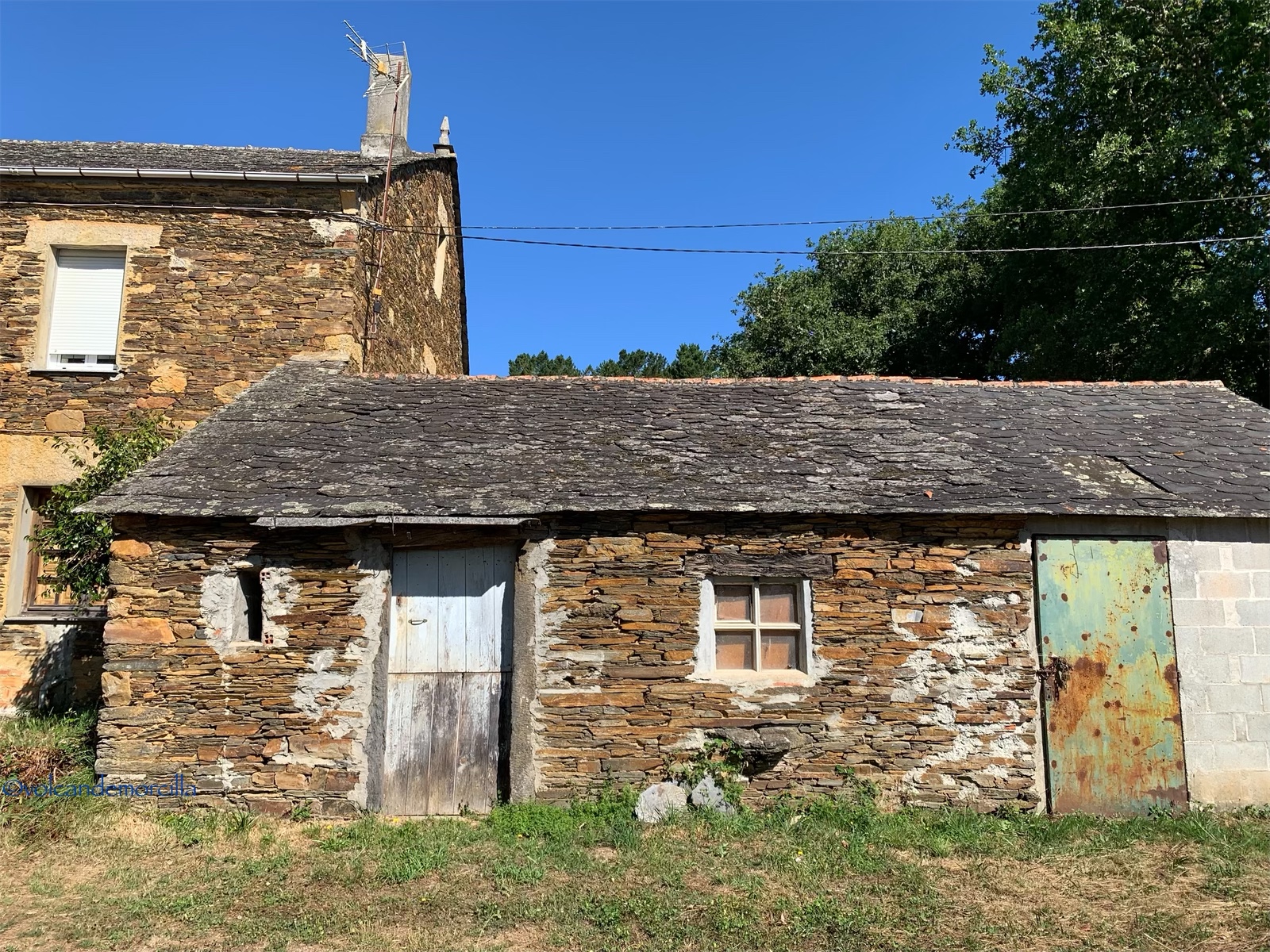
We found a little house where the owner, very artistic, has put pictures and various slogans. I liked this one about the good woman. She says the following: “A beautiful woman pleases the eyes, a good woman pleases the heart. The first is a jewel, the second a TREASURE”.
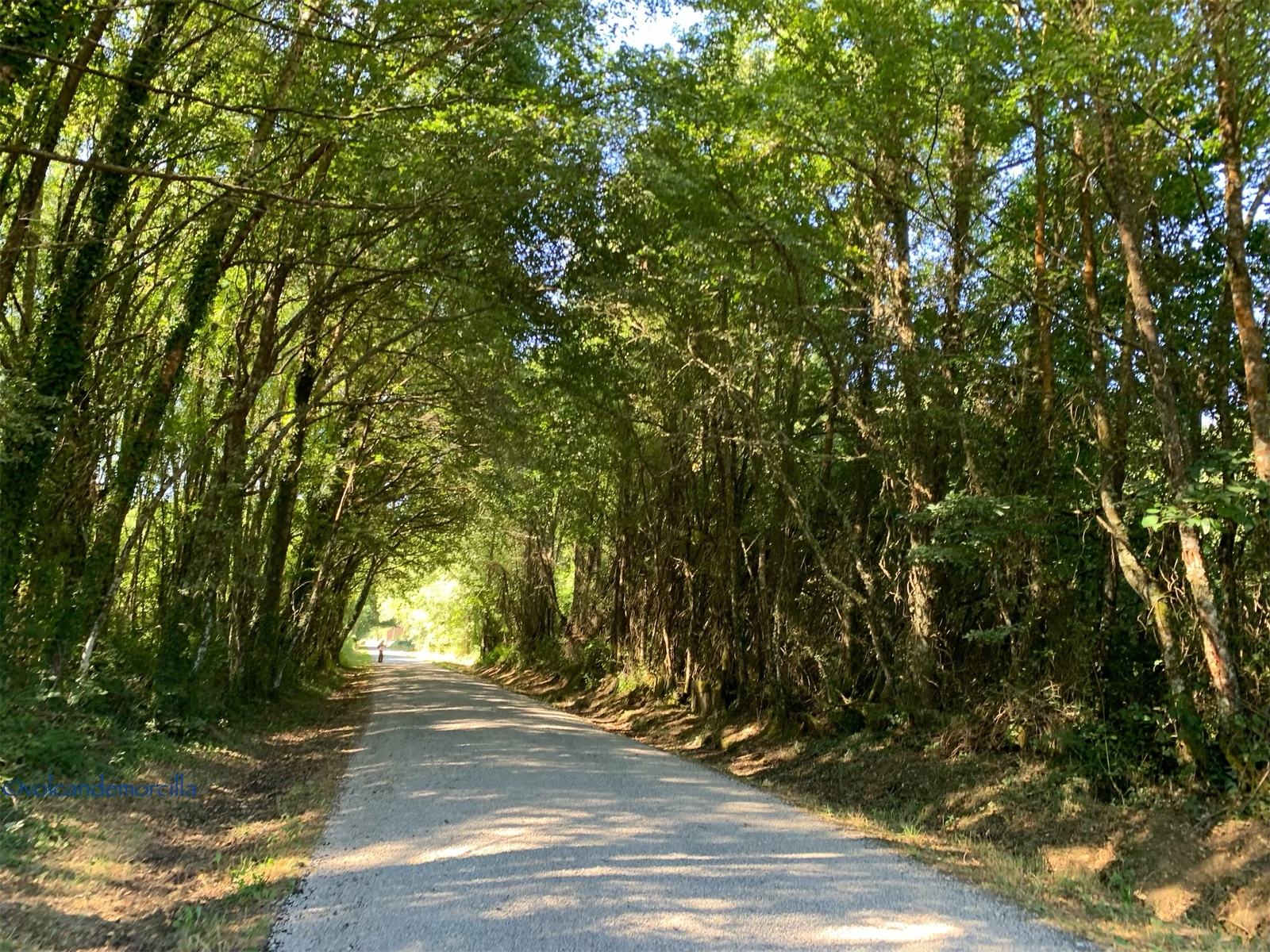
We pass by a cage where there are geese. As we get closer they begin to squawk. Its sound is very powerful. They say that the ancients used them as sentinels to warn, at the slightest noise, if someone was approaching. It is evident that its sound would be heard many meters away.
Perhaps for this reason, for the ancient Egyptians they had a religious meaning that symbolized rebirth by driving away evil. These birds migrate to the west every year and therefore have a special meaning on the Camino de Santiago, which is also called the Camino de las Ocas. According to scholars of the Jacobean theme, there is no doubt that the famous "Goose Game" is the representation of the Camino de Santiago. It seems that it contains cryptographic and exoteric messages from the Templar orders that guarded the pilgrimage route to the tomb of the Apostle. It is a very interesting subject and now, for reasons of time, I cannot extend myself to explain it.
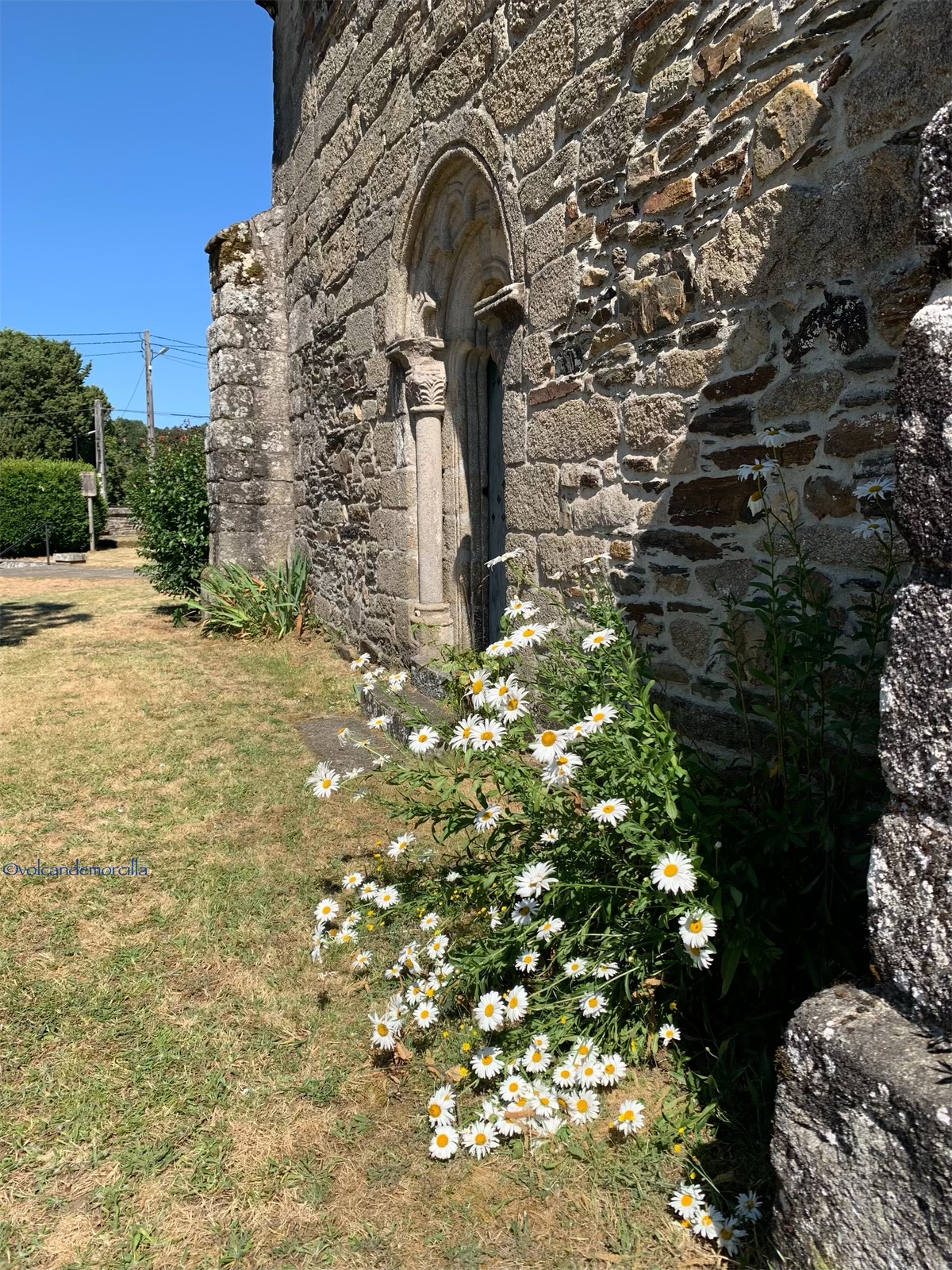
We arrive at Baamonde where there is a 9th century Romanesque church in honor of Santiago. Precisely, when we arrive and go up the stairs to get to the crossroads, being in front of the door, the bells begin to ring: it is 12:00. We cannot have more punctuality! We laughed a lot with that.
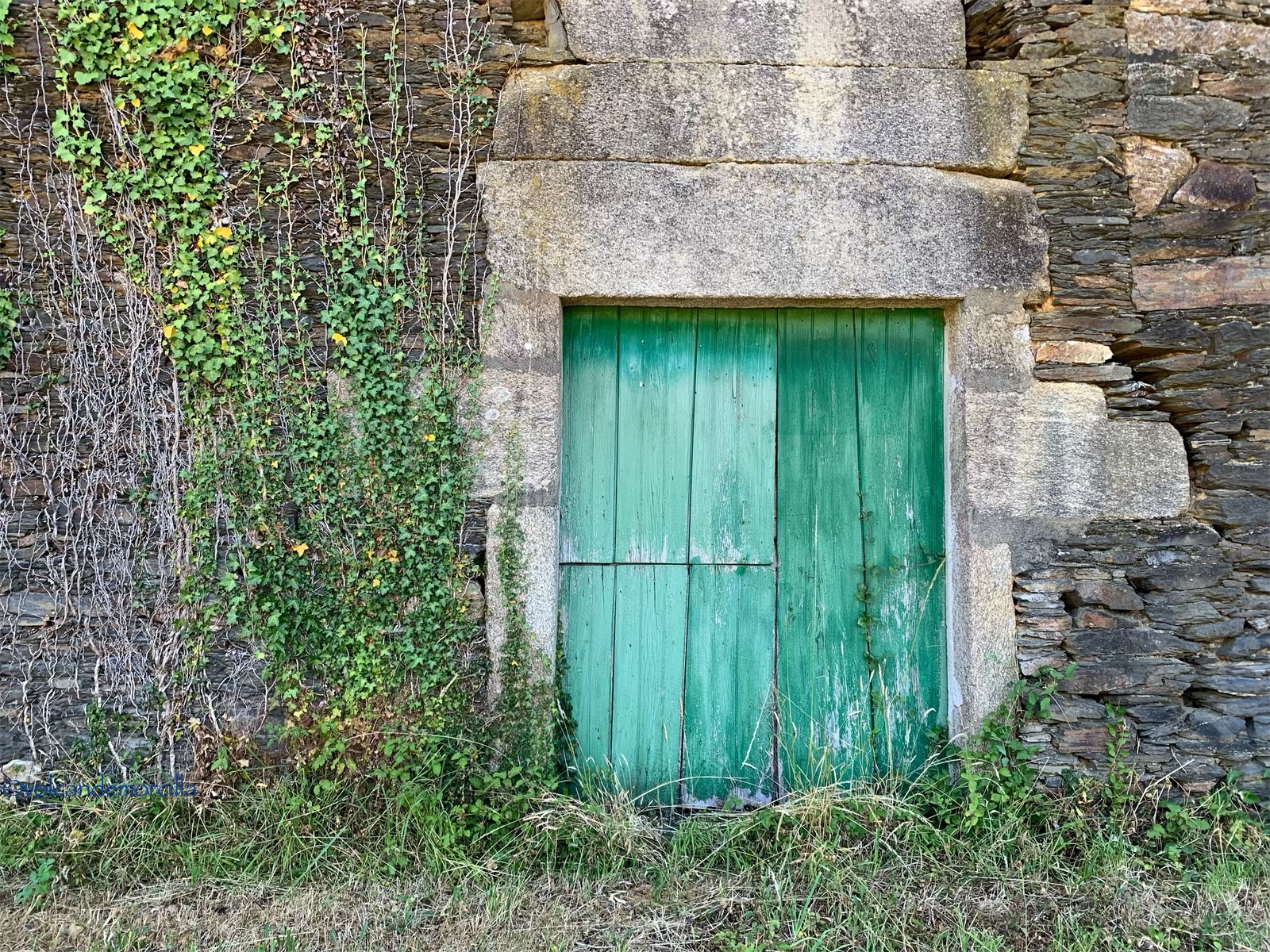
Next to the Church of Santiago, there is a large centenary chestnut tree that they wanted to cut down in 1972. It has a large slit and you can go inside. Local sculptor Victor Corral Castro got inside and sculpted a Virgen del Rosario in honor of the local patron saint, thereby preventing the disappearance of the fabulous tree that still produces chestnuts. They say it is the smallest chapel in the world.
We seal the credential in Baamonde, end of stage.
Now all that remains is to rest and recover for the rest of the day. I feel stiff and my legs hurt but I know that it is the usual thing that happens on the third day. More tomorrow!
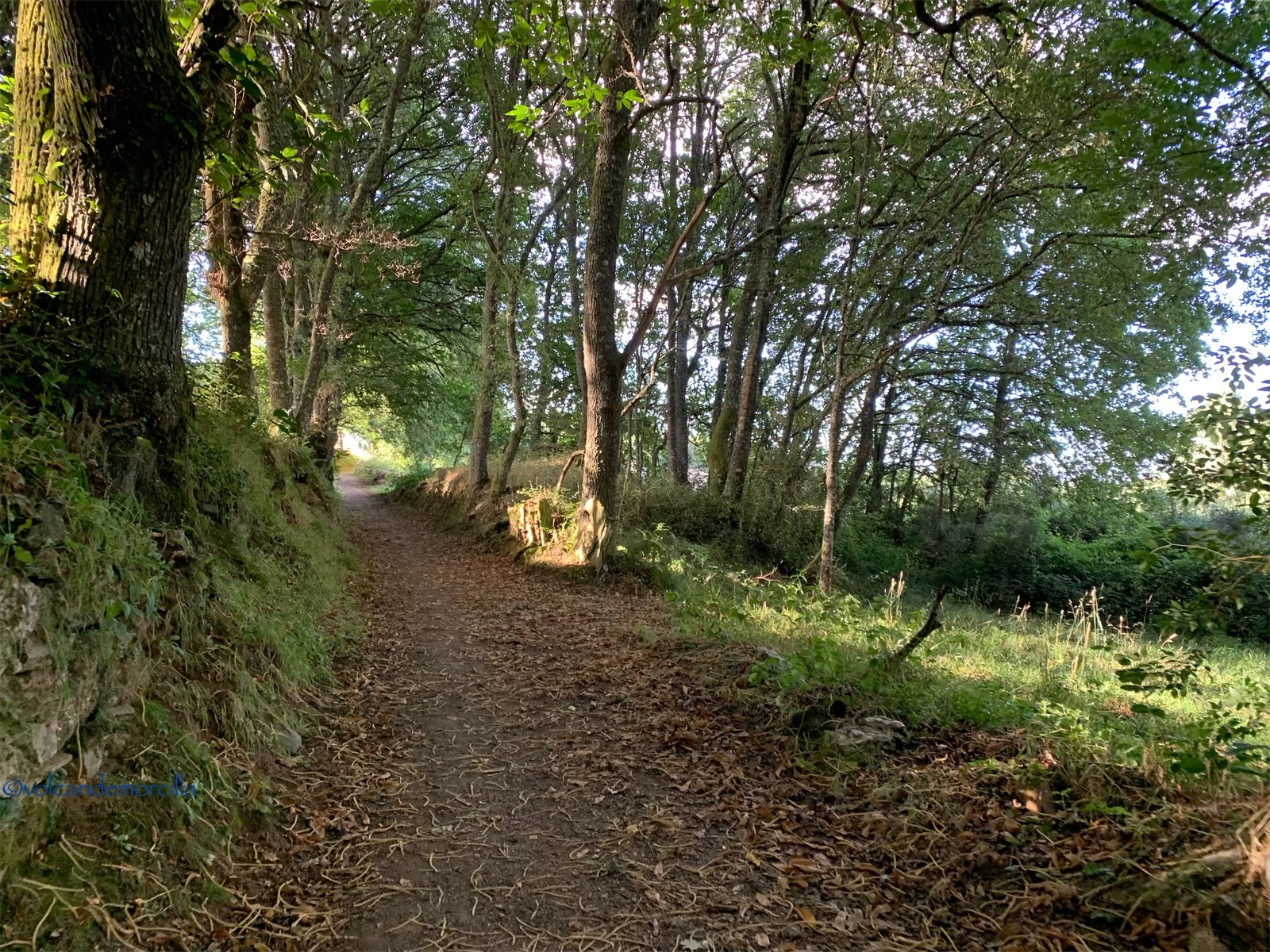
Cómo lo hago
Hice las fotografías con mi iPhone X. Para la edición utilicé la aplicación Snapseed y para la firma digital usé la App Watermark.
Los dibujos los hice en el iPad con el programa Sketches.
For the photography I use my iPhone X. For edition I use the Snapseed application and for the digital signature the Watermark app.
Everything I did on my mobile phone, I did not use the computer at all.
For the drawings, I use the Sketches program and paint them on the tablet.
Si quieres ver como lo hago, visualiza estos tres enlaces de publicaciones previas.
If you want to see how I do it, visualize these three links from previous publications.


Las fotos son mías y originales. También, soy el autor del dibujo separador.
¡Espero tus comentarios!
The photos are originals and mine. Also, I am the author of the separator drawing.
I await your comments.
Buen Camino!
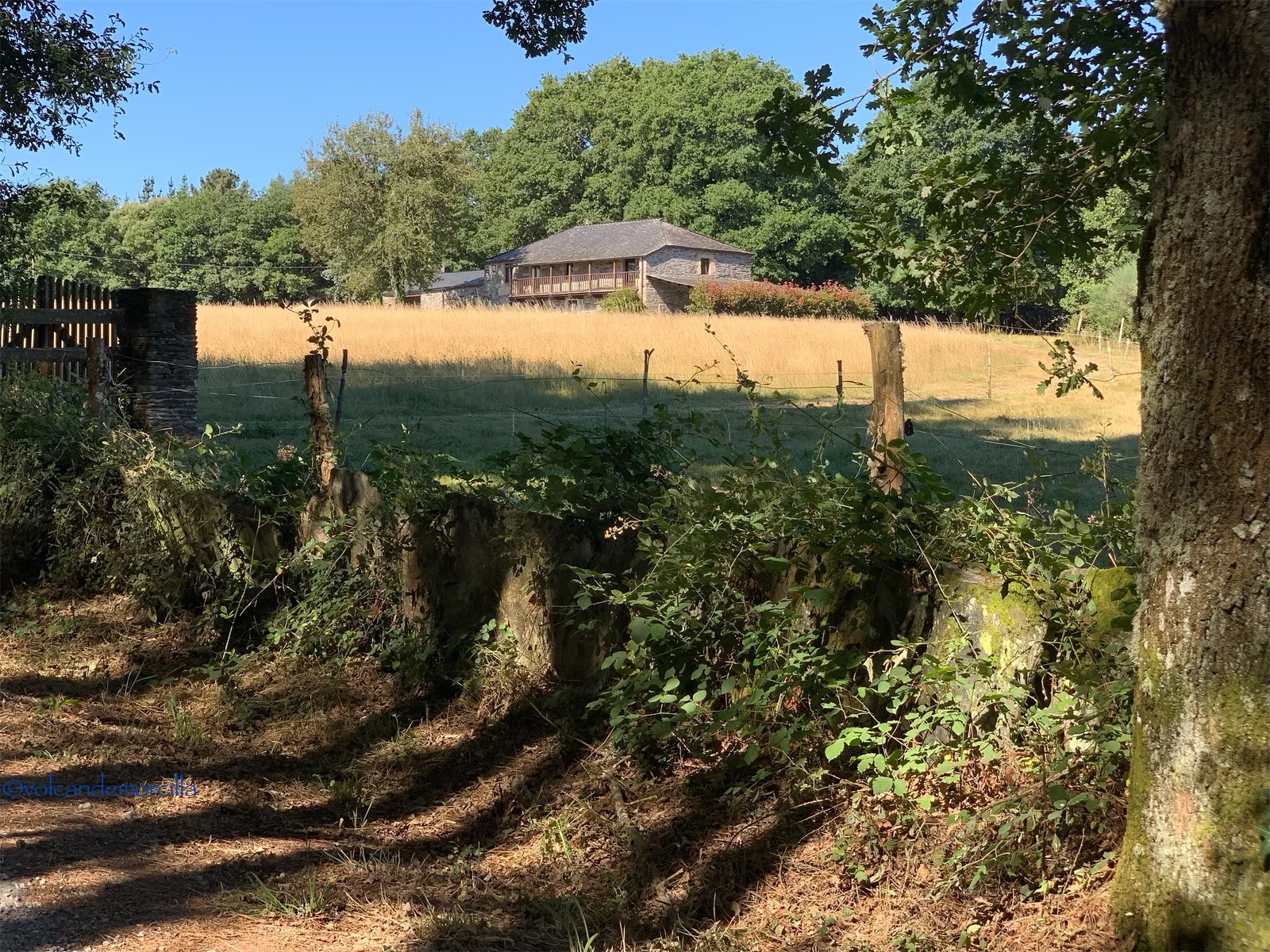
Su post ha sido valorado por @goya
Muchas Gracias amigos ☺️
@tipu curate 4
Upvoted 👌 (Mana: 0/55) Liquid rewards.
Thank you
Continuamos con el viaje, las fotografias excelentes. Disfruto mucho del camino de santiago atraves de tí. Quizas algun día tenga la oportunidad de disfrutar de este estos lindos paisajes. Quizas...
Es preocupante ver como muchas poblaciones se han quedado solas con sus ancianos.
Me gustaria que explicaras sobre el juego de la oca. Voy a buscar en google.
Un abrazo amigo @volcandemorcilla
Según lo que lo que se saque con los dados, se avanza o atrasa o se sufre una serie de castigos o premios. Lo jugué mucho de niño, igual que el parchís. Es divertido
Un abrazo grandeHola, querida @mafalda. Juego de la oca es un juego que se juega con dados y que se avanza a largo de 63 casillas que forman un recorrido en forma de caracol.
Un abrazoHola amigo @volcandemorcilla ¿como estas? es parecido al juego de ludo.
Feliz de volverte a ver por aquí. Luego con calma seguiré tu camino
Hola @volcandemorcilla, es una gran sorpresa volver a encontrarte en el camino. Ya me gustaría repetir pero, para mi no ha llegado el momento. Tus fotos muy especiales como siempre y estoy disfrutando de cada rincón que compartes con nosotros. ¡Buen camino!
Hola amiga alegra mucho verte. Espero que estés bien y tu familia y amigos también. De nuevo en el camino.
Voy escribiendo y recordando las etapas. Espero que te gusten. Un abrazo fuerte